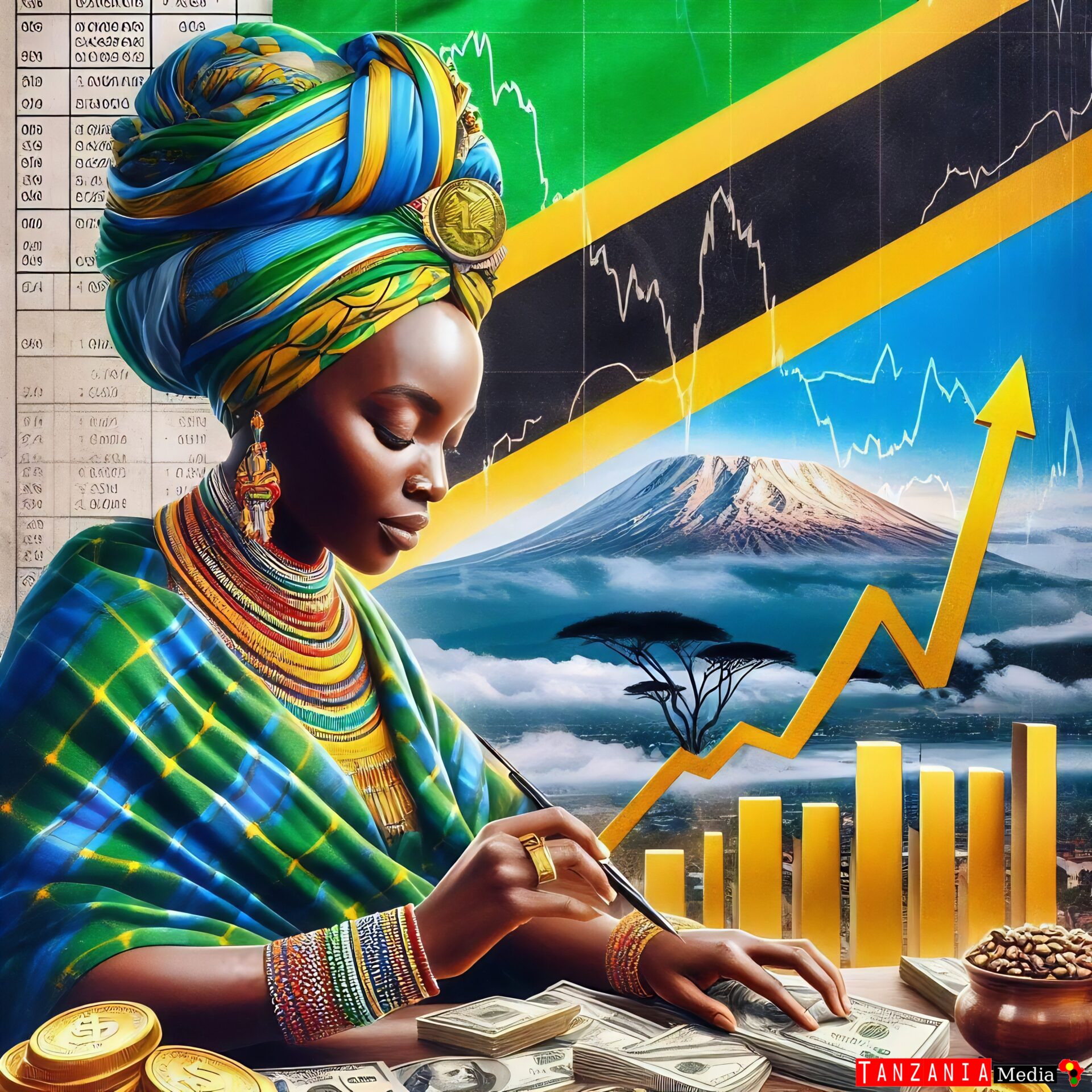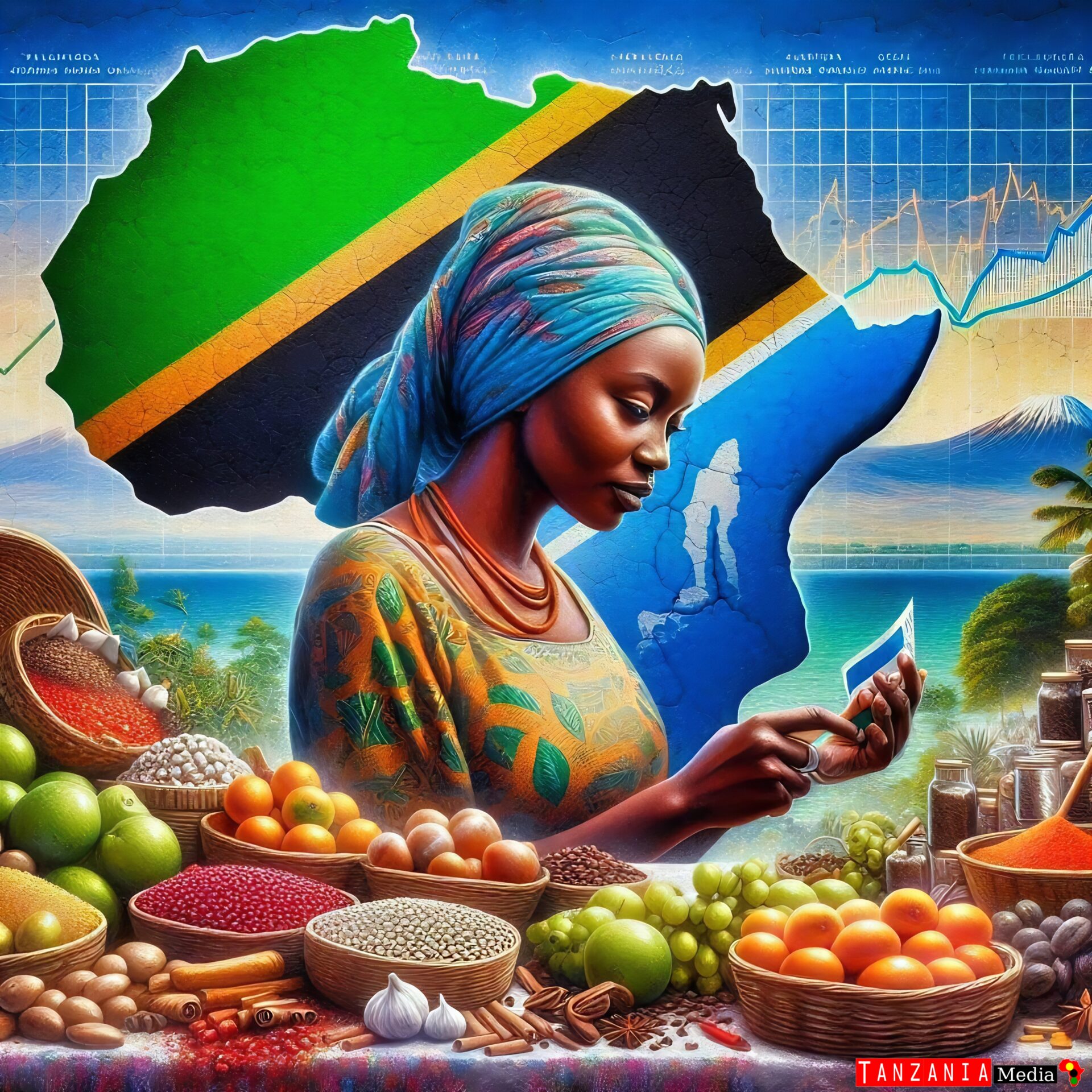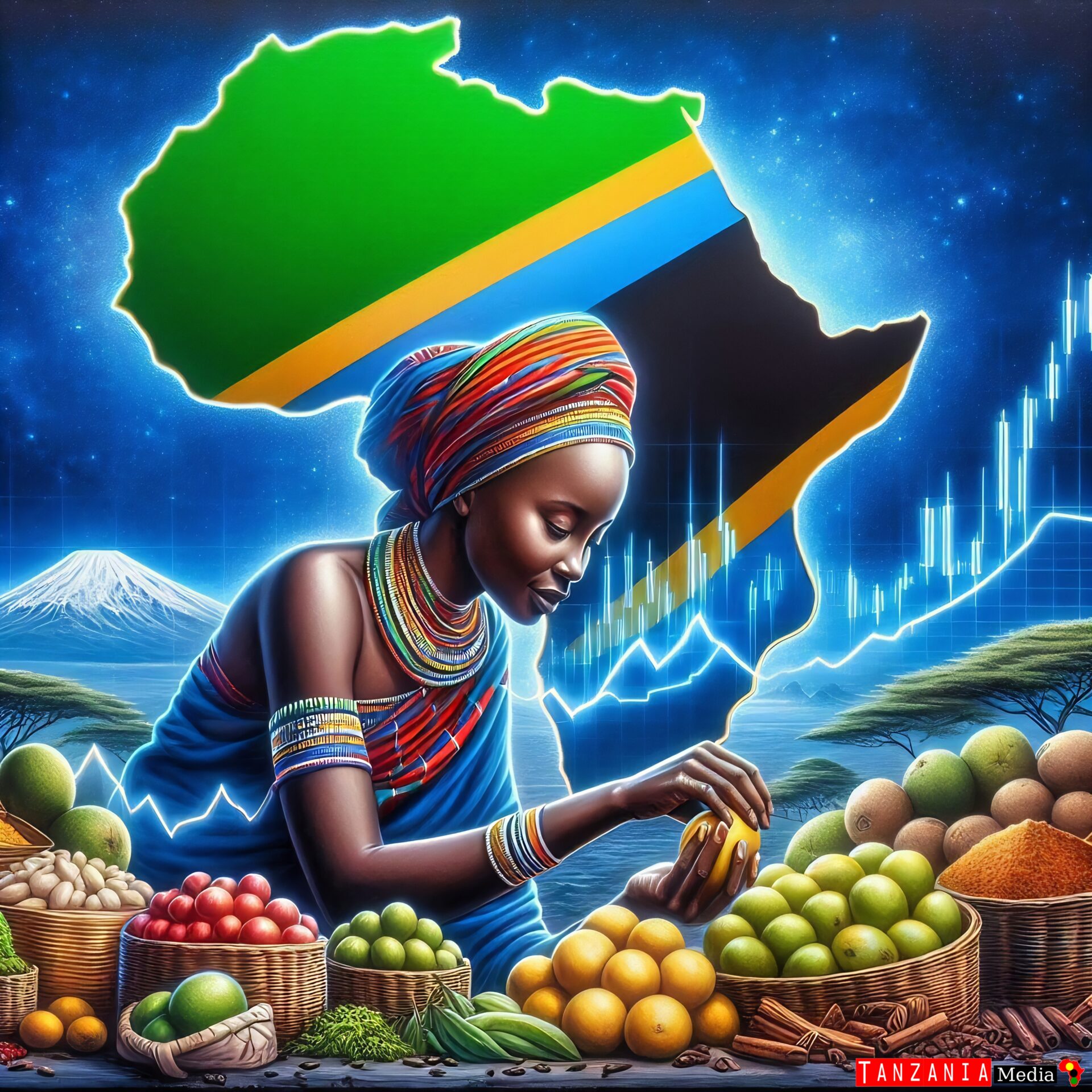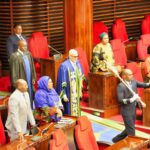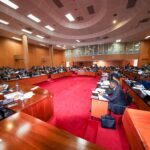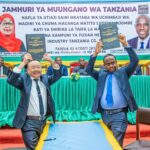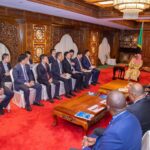Financial Report: Tanzania’s Exchange Rates, Exports, and Reserves – A Story of Opportunity and Resilience
Tanzania stands at a pivotal juncture in its economic journey, balancing the immense potential of its natural resources with the pressing need for sustainable development. As one of Africa’s most resource-rich nations, Tanzania’s economy is deeply intertwined with gold mining, agricultural exports like coffee and cloves, and the exclusive allure of gemstones such as tanzanite. However, structural vulnerabilities—ranging from overreliance on raw material exports to logistical inefficiencies and climate change impacts—pose significant challenges. By diversifying its economy through value addition, embracing digital innovation, and fostering inclusive policies, Tanzania has the opportunity to transform its wealth into shared prosperity.
This article delves into the nation’s trade dynamics, exchange rate strategies, foreign reserves management, and human-centred approaches to growth, offering insights into how Tanzania can navigate its crossroads and emerge as a beacon of hope and possibility for the African continent. From empowering small-scale farmers and artisanal miners to leveraging global partnerships under frameworks like the African Continental Free Trade Area (AfCFTA), Tanzania’s choices today will shape its legacy tomorrow.
-
Gold as Tanzania’s Crown Jewel: The Backbone of an Economy
In the vast and resource-rich landscapes of Tanzania, few commodities shine as brightly—both literally and figuratively—as gold. Revered globally for its intrinsic value and timeless allure, gold has firmly established itself as Tanzania’s crown jewel, commanding over $5 billion annually in export revenues. This staggering figure not only underscores its dominance in the nation’s trade portfolio but also highlights its critical role in stabilising the economy and fortifying foreign reserves. As of April 22, 2025, the Bank of Tanzania’s indicative exchange rate for gold stands at an impressive 8,853,510.2333 Tanzanian Shillings (TZS) per Troy ounce—a testament to its enduring significance in global markets and its outsized contribution to Tanzania’s financial health.
The Economic Lifeline
Gold is far more than a precious metal in Tanzania; it is a lifeline that sustains millions of livelihoods and anchors the nation’s economic stability. For decades, regions like Geita, Kahama, and Mwanza have been synonymous with gold mining, attracting both artisanal miners and multinational corporations alike. These areas are home to sprawling mines where tonnes of ore are painstakingly extracted, processed, and refined before being shipped to international buyers.
The revenue generated from these operations flows directly into Tanzania’s coffers, accounting for over 30% of total exports. This influx of foreign currency plays a pivotal role in bolstering Tanzania’s balance of payments and ensuring that the country can meet its international obligations. Moreover, gold’s high value relative to other exports makes it a reliable source of income, even during periods of global economic turbulence. When prices of agricultural goods or minerals fluctuate, gold often remains resilient, providing much-needed stability.
A Pillar of Foreign Reserves
Foreign reserves are the bedrock of any nation’s monetary policy, acting as a buffer against external shocks and ensuring confidence among investors. In Tanzania’s case, gold serves as the cornerstone of these reserves. The indicative exchange rate of 8,853,510.2333 TZS per Troy ounce reflects not just the market value of gold but also its strategic importance. By maintaining robust reserves, Tanzania can weather crises such as pandemics, geopolitical tensions, or sudden shifts in commodity prices.
For example, during the height of the COVID-19 pandemic, when many sectors ground to a halt, gold exports provided a steady stream of foreign exchange earnings. This enabled the government to import essential goods, service debt, and maintain macroeconomic stability. Without gold’s consistent performance, the impact of the pandemic on Tanzania’s economy could have been far more severe.
Challenges Amidst Success
Despite its undeniable benefits, reliance on gold comes with inherent risks. One major concern is the volatility of global gold prices, which are influenced by factors ranging from geopolitical tensions to central bank policies. A sharp decline in prices could significantly reduce export revenues, straining public finances and undermining growth prospects. Additionally, there is growing pressure to ensure that mining activities are conducted sustainably and equitably. Artisanal miners, who constitute a significant portion of the workforce, often operate under precarious conditions without adequate safety measures or fair compensation.
Furthermore, critics argue that exporting raw gold without adding value locally represents a missed opportunity. Establishing refineries within Tanzania could create jobs, increase tax revenues, and position the country as a regional hub for gold processing. However, this requires substantial investment in infrastructure, technology, and skills development—challenges that cannot be overlooked.
A Symbol of National Pride
Beyond its economic contributions, gold holds cultural and symbolic significance in Tanzania. It is a source of national pride, representing the country’s rich natural heritage and potential for prosperity. Communities living near mining sites often view gold as a blessing that brings employment and development opportunities. Yet, they also grapple with the environmental and social costs associated with large-scale extraction, including deforestation, water pollution, and displacement.
To address these concerns, the Tanzanian government has taken steps to regulate the sector more effectively. Policies introduced in recent years aim to ensure that mining companies adhere to stricter environmental standards while sharing a larger share of profits with local communities. These efforts reflect a broader commitment to balancing economic growth with sustainable development.
Looking Ahead: Securing Gold’s Future
As Tanzania looks to the future, harnessing the full potential of its gold reserves will require a delicate balancing act. On one hand, maximising revenues from gold exports is vital for funding development projects, improving infrastructure, and reducing poverty. On the other hand, diversifying the economy beyond raw material exports is equally important to mitigate risks and build long-term resilience.
One promising avenue is promoting downstream industries, such as jewellery manufacturing, which could add value to raw gold and create new employment opportunities. Strengthening partnerships with international buyers and fostering transparency in the mining sector are also crucial steps toward ensuring that Tanzania reaps the maximum benefit from its golden bounty.
Gold is undeniably Tanzania’s crown jewel—a treasure that has shaped its past, defines its present, and holds immense promise for its future. With an indicative exchange rate of 8,853,510.2333 TZS per Troy ounce, its economic importance cannot be overstated. From stabilising foreign reserves to supporting rural livelihoods, gold touches nearly every aspect of Tanzanian life. However, realising its full potential will depend on prudent management, innovative policies, and a steadfast commitment to sustainability.
As Tanzania continues to navigate the complexities of a rapidly changing world, gold will remain a beacon of hope—a shining reminder of what this remarkable nation can achieve when it leverages its natural wealth wisely.
-
Exchange Rate Dynamics: Navigating Global Markets in Tanzania
In the intricate web of global commerce, exchange rates serve as the invisible threads that connect economies, enabling trade, investment, and economic growth. For Tanzania—a nation whose prosperity is deeply intertwined with international markets—the Tanzanian Shilling (TZS) plays a pivotal role in shaping its position on the world stage. As of April 22, 2025, the TZS’s buying and selling rates against major currencies such as the US Dollar (USD), British Pound (GBP), and Euro (EUR) provide a snapshot of Tanzania’s economic health and its ability to navigate the complexities of global trade. However, these figures also underscore the vulnerabilities posed by currency fluctuations, which can ripple through every sector of the economy.
The Numbers Behind the Currency
The Bank of Tanzania’s indicative exchange rates reveal a nuanced picture of the TZS’s standing in global markets:
- USD : The TZS trades at 2,660.2376 (buying) and 2,686.84 (selling) per US Dollar.
- GBP : The TZS is valued at 3,525.3469 (buying) and 3,561.6751 (selling) per British Pound.
- EUR : The TZS exchanges at 3,022.562 (buying) and 3,053.325 (selling) per Euro.
These numbers are not mere statistics; they represent Tanzania’s gateway to the global economy. A stronger USD, for instance, means higher import costs for goods like machinery, electronics, and fuel—essential inputs for industries ranging from manufacturing to agriculture. Conversely, a weaker TZS can make Tanzanian exports more competitive abroad, potentially boosting revenues from sectors like gold mining, coffee production, and textiles.
Currency Fluctuations: Opportunities and Risks
Currency dynamics are inherently volatile, influenced by factors such as inflation, interest rates, geopolitical tensions, and shifts in global demand. For Tanzania, this volatility presents both opportunities and risks. Consider a scenario where the TZS weakens against the USD:
- Opportunities : Exporters benefit from increased competitiveness. A weaker TZS makes Tanzanian products cheaper for foreign buyers, potentially boosting sales of coffee, tea, and minerals. This could lead to higher export earnings, strengthening the country’s balance of payments.
- Risks : On the flip side, businesses reliant on imported goods face higher costs. For example, a construction company importing steel or cement would see its expenses rise, squeezing profit margins and potentially driving up prices for consumers. Similarly, households relying on imported staples like wheat flour or cooking oil may experience increased living costs, exacerbating inflationary pressures.

Conversely, a stronger TZS offers relief to import-dependent sectors but could hurt exporters by making their goods less attractive in overseas markets. Striking the right balance is therefore crucial for maintaining economic stability.
Navigating Trade Partnerships
Tanzania’s exchange rate dynamics are closely tied to its relationships with key trading partners. The United States, European Union, India, China, and South Africa are among the country’s largest trading allies, each influencing Tanzania’s economic trajectory in unique ways:
- India : As one of Tanzania’s top trading partners, India accounts for nearly 20% of its exports, primarily gold and agricultural products. A stable TZS-USD exchange rate facilitates smoother transactions, ensuring that Tanzanian exporters receive fair compensation for their goods.
- China : With growing investments in infrastructure projects across Tanzania, China’s influence extends beyond trade into development partnerships. A competitive TZS-EUR rate supports procurement of Chinese machinery and equipment, fostering industrial growth.
- South Africa : As a regional powerhouse, South Africa provides critical imports such as vehicles and pharmaceuticals. A stable TZS-ZAR (South African Rand) exchange rate ensures affordable access to these essential goods.
However, reliance on external partners also exposes Tanzania to external shocks. For instance, if the USD strengthens globally due to tighter monetary policies by the Federal Reserve, Tanzanian businesses could face higher borrowing costs and reduced purchasing power. Such scenarios highlight the importance of diversifying trade relationships and building resilience against global uncertainties.

Policy Responses: Stabilising the TZS
To mitigate the risks posed by currency fluctuations, the Bank of Tanzania employs various tools to stabilise the TZS:
- Foreign Exchange Reserves : By maintaining robust reserves, the central bank can intervene in currency markets to prevent excessive volatility. For example, during periods of heightened demand for USD, the bank may sell dollars to stabilise the TZS.
- Monetary Policy : Adjusting interest rates influences the attractiveness of the TZS to investors. Higher interest rates can attract foreign capital, strengthening the currency, while lower rates encourage domestic spending and investment.
- Trade Facilitation : Streamlining customs procedures and improving port efficiency reduce transaction costs, making Tanzanian exports more competitive regardless of exchange rate movements.
Despite these measures, challenges persist. Informal cross-border trade, smuggling of precious minerals like gold, and limited financial inclusion hinder effective policy implementation. Addressing these issues requires a multipronged approach involving government agencies, private sector stakeholders, and civil society.
Real-World Implications
To truly understand the impact of exchange rate dynamics, consider the story of Fatima, a small-scale coffee farmer in Mbeya. When the TZS weakens against the USD, her earnings from exporting premium Arabica beans increase, allowing her to invest in better farming equipment and improve yields. However, when the TZS strengthens, she struggles to compete with larger producers who can afford discounts to retain market share. Similarly, Ahmed, an importer of medical supplies in Dar es Salaam, benefits from a strong TZS as it lowers his costs, enabling him to offer affordable healthcare products to local clinics.

These real-world examples illustrate how exchange rates permeate every level of society, affecting livelihoods, businesses, and communities. They also highlight the need for inclusive policies that protect vulnerable groups while promoting overall economic growth.
A Balancing Act for Tanzania
For Tanzania, navigating exchange rate dynamics is akin to walking a tightrope. On one hand, maintaining a competitive TZS is essential for supporting exports and attracting foreign investment. On the other hand, excessive depreciation can fuel inflation and erode consumer confidence. Achieving equilibrium requires foresight, adaptability, and collaboration between policymakers, businesses, and citizens.
As Tanzania continues to integrate into global markets, understanding and managing exchange rate risks will be paramount. Whether through innovative monetary policies, strategic trade agreements, or investments in digital finance, the nation must remain vigilant in safeguarding the value of its currency. After all, the TZS is not just a symbol of monetary worth—it is a reflection of Tanzania’s aspirations, resilience, and potential to thrive in an interconnected world.
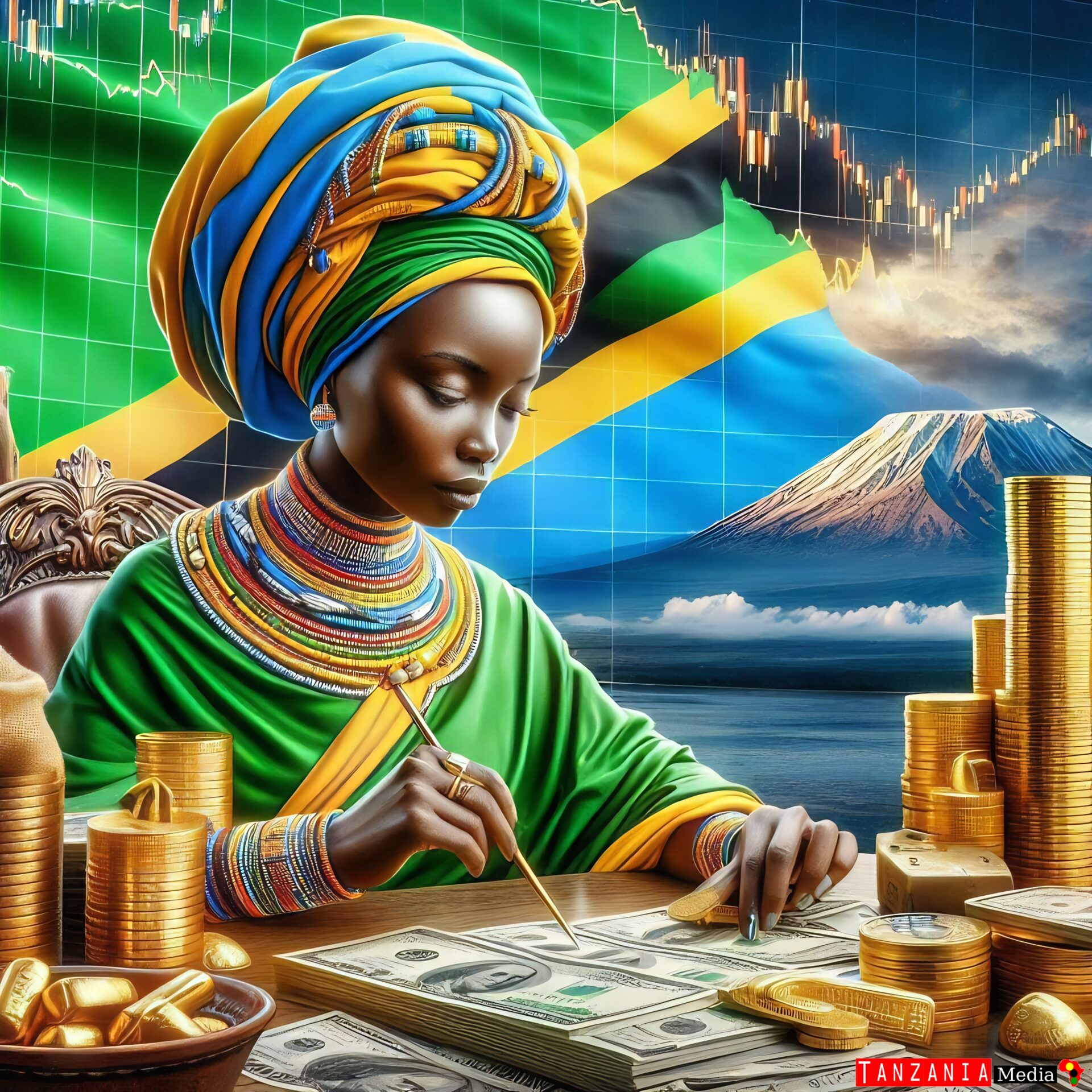
Conclusion: Beyond the Numbers
Exchange rate dynamics are more than abstract figures; they are the lifeblood of Tanzania’s engagement with the global economy. The TZS’s performance against major currencies like the USD, GBP, and EUR shapes everything from the price of imported goods to the profitability of local exporters. While challenges abound—from currency volatility to external dependencies—opportunities also exist to harness these dynamics for sustainable growth. By adopting prudent policies, fostering innovation, and prioritising inclusivity, Tanzania can transform its exchange rate management into a catalyst for progress.
In the end, the true measure of success lies not in the strength of the TZS alone, but in its ability to empower Tanzanians to build a brighter, more prosperous future.
-
Agriculture: Feeding the Nation and Fuelling Exports
In Tanzania, agriculture is not merely a sector—it is the lifeblood of the nation. From the fertile slopes of Mount Kilimanjaro to the sun-drenched plains of Dodoma, this vast and diverse land is home to an agricultural tapestry that sustains millions of livelihoods while simultaneously driving economic growth. Agricultural products such as coffee, tea, spices, and oil seeds collectively contribute hundreds of millions of dollars to Tanzania’s GDP each year. This dual role—ensuring food security for its growing population and generating substantial export revenues—makes agriculture the backbone of Tanzania’s economy.
The Breadbasket of Tanzania
Tanzania’s agricultural sector employs approximately 65% of the country’s workforce, making it the largest employer in the nation. For countless families, farming is not just a profession; it is a way of life. In rural areas, smallholder farmers cultivate maize, rice, cassava, and millet to feed their households and local communities. These staple crops form the foundation of Tanzania’s food security, ensuring that even in times of economic uncertainty, the nation can rely on its own resources to nourish its people.
However, the story of Tanzanian agriculture extends far beyond subsistence farming. The country’s unique geography, climate, and biodiversity create ideal conditions for cultivating high-value cash crops that are in demand worldwide. Coffee from Mbeya, cloves from Zanzibar, and sesame seeds from Singida exemplify how Tanzania leverages its natural advantages to fuel exports and generate foreign exchange earnings.
Coffee: A Bean of Global Significance
Few products encapsulate Tanzania’s agricultural potential better than coffee. Grown primarily in regions like Arusha, Kilimanjaro, Kagera, and Mbeya, Tanzanian coffee is renowned for its rich aroma, bold flavour, and premium quality. Arabica beans grown on the slopes of Mount Meru and Mount Kilimanjaro fetch some of the highest prices in international markets, appealing to discerning buyers in Europe, North America, and Asia.

Coffee alone contributes tens of millions of dollars annually to Tanzania’s export revenue. Yet, its significance goes beyond economics. For thousands of small-scale farmers, coffee represents a pathway out of poverty. By participating in global value chains, they gain access to new opportunities and improve their standard of living. Programs aimed at enhancing productivity, promoting sustainable farming practices, and improving market access have further strengthened the sector’s contribution to both national and household incomes.
Tea: Brewing Prosperity
Another star of Tanzania’s agricultural portfolio is tea, grown predominantly in the Southern Highlands of Njombe and Mufindi. Known for its robust flavour and vibrant colour, Tanzanian tea has carved out a niche in competitive global markets. Like coffee, tea production supports rural livelihoods, providing employment to thousands of workers who tend to plantations, harvest leaves, and process them into finished products.
Tea exports bring in significant foreign exchange earnings, contributing to Tanzania’s balance of payments. Moreover, efforts to modernise processing facilities and promote organic certification have opened doors to premium markets, enabling producers to command higher prices. This shift toward value addition highlights the untapped potential within Tanzania’s agricultural sector.
Spices: The Fragrance of Zanzibar
When one thinks of Tanzanian spices, the islands of Zanzibar inevitably come to mind. Cloves, nutmeg, cinnamon, and black pepper are synonymous with the archipelago’s rich history and cultural heritage. Once dubbed the “Spice Islands,” Zanzibar remains a major producer of aromatic spices that are coveted globally for culinary and medicinal purposes.
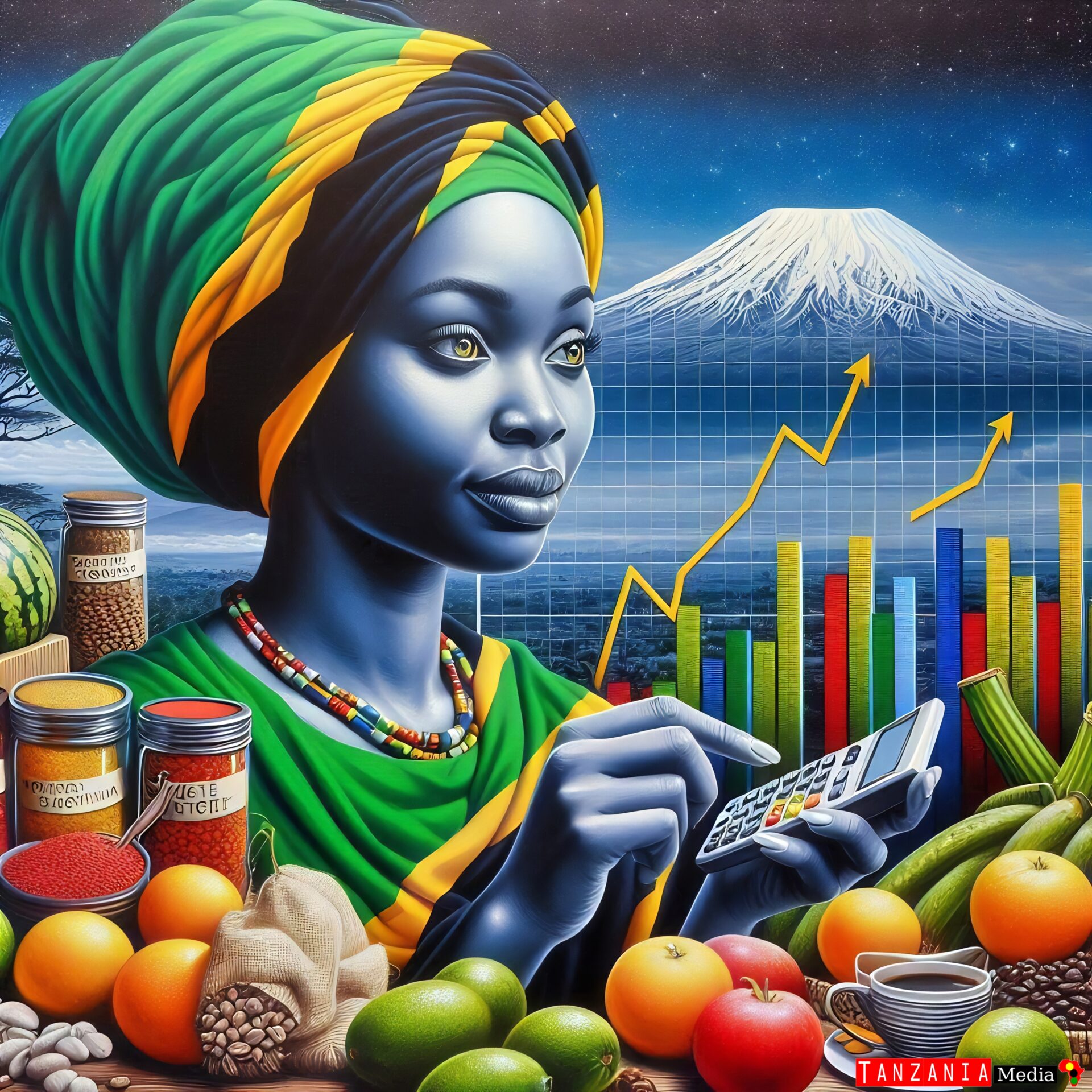
Cloves, in particular, stand out as a key export commodity, earning millions of dollars annually. Despite challenges such as fluctuating global prices and competition from synthetic alternatives, spice cultivation continues to play a vital role in Zanzibar’s economy. Beyond monetary gains, these crops preserve traditional knowledge systems and strengthen community ties, reinforcing the cultural identity of the region.
Oil Seeds: A Growing Star
In recent years, oil seeds such as sesame and sunflower have emerged as promising contributors to Tanzania’s agricultural output. Sesame, often referred to as “sim sim” locally, thrives in semi-arid regions like Singida and Dodoma, where rainfall patterns suit its drought-resistant nature. As a result, sesame has become a lifeline for farmers in these areas, offering a reliable source of income.
Exported primarily to Asian markets, sesame generates substantial foreign exchange earnings while also supporting local economies. Similarly, sunflower seeds are processed domestically into edible oils, reducing reliance on imported cooking oils and promoting self-sufficiency. Investments in mechanised farming techniques and improved seed varieties hold the promise of further boosting yields and profitability.

Dual Role: Food Security and Economic Growth
What sets Tanzanian agriculture apart is its ability to serve two critical functions simultaneously:
- Food Security : By producing staples like maize, rice, and cassava, the sector ensures that Tanzanians have access to affordable and nutritious food. This is particularly important given the country’s rapidly growing population, which is projected to exceed 100 million by 2050.
- Revenue Generation : High-value cash crops like coffee, tea, and spices inject much-needed foreign currency into the economy, bolstering reserves and funding development projects. Together, these contributions underscore agriculture’s indispensable role in shaping Tanzania’s future.
Challenges Facing Tanzanian Agriculture
Despite its immense potential, Tanzania’s agricultural sector faces several hurdles that threaten its sustainability and growth:
- Climate Change : Erratic rainfall patterns, prolonged droughts, and unpredictable weather events pose significant risks to crop yields. Farmers in regions like Dodoma and Singida are especially vulnerable, as their livelihoods depend heavily on rain-fed agriculture.
- Infrastructure Deficits : Poor road networks, inadequate storage facilities, and limited irrigation systems hinder efficient transportation and preservation of produce. Post-harvest losses remain a persistent issue, reducing farmers’ profits and wasting valuable resources.
- Market Access : Many smallholder farmers struggle to reach international markets due to lack of information, limited bargaining power, and insufficient support from cooperatives or government agencies.
- Land Tenure Issues : Disputes over land ownership and unclear property rights discourage long-term investments in agriculture, particularly among women and youth.
Addressing these challenges requires a concerted effort involving policymakers, private sector players, and civil society organisations. Initiatives such as climate-smart agriculture, digital platforms connecting farmers to buyers, and reforms in land tenure laws could pave the way for transformative change.
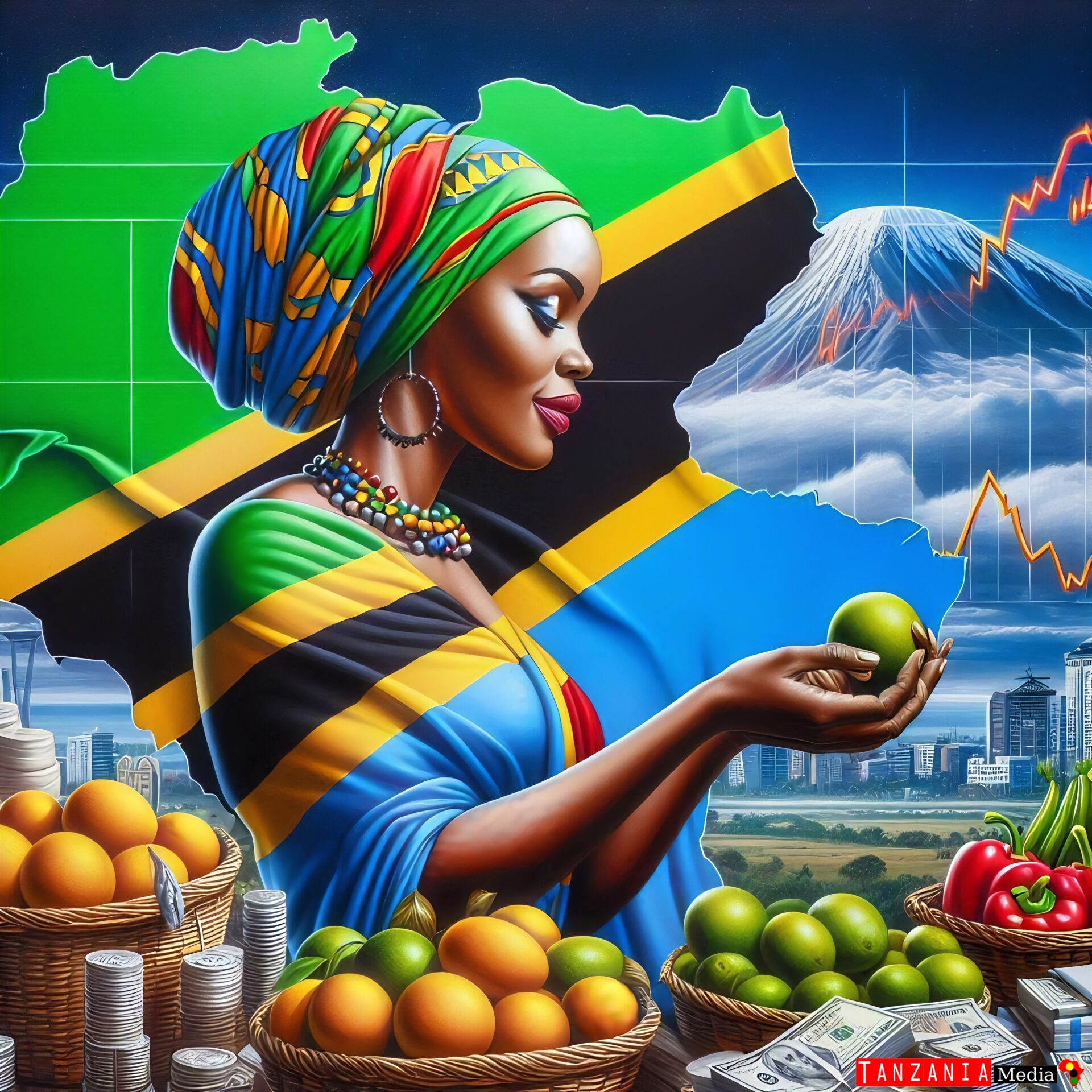
Seizing Opportunities for Transformation
To unlock the full potential of Tanzanian agriculture, innovative solutions must be embraced:
- Value Addition : Processing raw materials domestically—such as roasting coffee beans or packaging spices—can increase their value and create jobs. Establishing agro-processing hubs near production sites would streamline operations and reduce costs.
- Sustainable Practices : Promoting environmentally friendly farming methods, such as conservation agriculture and organic certification, will protect ecosystems and appeal to eco-conscious consumers abroad.
- Technology Adoption : Leveraging digital tools like mobile apps for weather forecasting, pest control advice, and market pricing updates empowers farmers to make informed decisions and optimise their yields.
- Policy Support : Strengthening policies related to subsidies, credit access, and insurance schemes will provide a safety net for farmers, encouraging them to invest in their enterprises.
Conclusion: Cultivating a Brighter Future
Agriculture is more than just a sector in Tanzania—it is the heartbeat of the nation. Whether feeding families, fuelling exports, or fostering rural development, its impact resonates across every corner of society. Products like coffee, tea, spices, and oil seeds exemplify Tanzania’s ability to harness its natural bounty for economic prosperity. However, realising this vision fully demands addressing existing challenges head-on and embracing opportunities for innovation.
As Tanzania looks to the horizon, the path forward lies in nurturing its agricultural roots while planting seeds for a brighter, more inclusive future. By doing so, the nation can ensure that its fields continue to yield abundance—not only for today’s generation but for those yet to come. After all, in the words of a Swahili proverb, “Miti niishi, mtu anavyoishi” —as the tree lives, so does the person. For Tanzania, agriculture is indeed the tree upon which the nation’s dreams rest.
-
Diversification Beyond Gold: Minerals Shine Bright
While gold has long dominated Tanzania’s mining sector, the country’s mineral wealth extends far beyond this precious metal. Diamonds, rubies, and tanzanite—each with its own unique allure—complement gold as key exports, diversifying Tanzania’s mining portfolio and attracting global investors. These gemstones shine brightly in international markets and hold immense potential to transform Tanzania’s economy. However, infrastructural hurdles, regulatory challenges, and ethical concerns present significant obstacles that must be addressed to fully harness their value.
A Treasure Trove of Gemstones
Tanzania is blessed with an extraordinary array of mineral resources, many of which are found in some of the most remote and picturesque corners of the country. Among these treasures, diamonds, rubies, and tanzanite stand out as particularly promising contributors to Tanzania’s export earnings and economic development.
- Diamonds: A Symbol of Enduring Value
Diamonds mined in Tanzania are prized for their quality and rarity, particularly those sourced from the Williamson Mine in Shinyanga Region—one of the oldest diamond mines in Africa. Known colloquially as the “Jubilee Diamond,” this mine has produced some of the world’s finest pink diamonds, fetching astronomical prices at auction houses worldwide.The diamond trade contributes tens of millions of dollars annually to Tanzania’s foreign exchange reserves, while also providing employment opportunities for thousands of workers in the mining and processing industries. Moreover, diamonds have a timeless appeal, making them less susceptible to market volatility compared to other commodities. This stability offers Tanzania a reliable source of revenue even during periods of economic uncertainty.
-
- Rubies: A Growing Star
Rubies, often referred to as the “King of Gemstones,” are another jewel in Tanzania’s crown. The Winza Ruby Deposit in central Tanzania is among the largest ruby deposits globally, producing stones renowned for their deep red hue and exceptional clarity. In recent years, Tanzanian rubies have gained prominence in high-end jewellery markets, especially in Europe and Asia.Despite their growing reputation, the ruby industry faces challenges such as illegal mining, smuggling, and underdeveloped infrastructure. Addressing these issues through improved regulation and investment in processing facilities could significantly enhance the sector’s contribution to Tanzania’s economy.
- Tanzanite: A National Pride
Perhaps no gemstone embodies Tanzania’s uniqueness more than tanzanite—a rare blue-violet stone found exclusively in the Merelani Hills near Arusha. Discovered in 1967, tanzanite quickly captured the imagination of gem enthusiasts worldwide due to its striking colour and limited availability. Experts estimate that the remaining supply of tanzanite will be exhausted within the next two decades, adding urgency to efforts to maximise its value.Tanzanite exports generate millions of dollars annually, supporting local communities and funding national development projects. Its rarity and exclusivity make it a coveted luxury item, appealing to affluent buyers who seek distinctive pieces of jewellery. By positioning tanzanite as a symbol of Tanzanian heritage, the government aims to elevate its status on the global stage while ensuring equitable benefits for miners and surrounding communities.
Attracting Global Investors
The presence of these diverse minerals has made Tanzania a magnet for global investors seeking opportunities in the mining sector. Multinational corporations, boutique gemstone traders, and artisanal miners alike are drawn to Tanzania’s rich deposits, eager to capitalise on their potential. For example:
- International firms invest in large-scale operations to extract diamonds and rubies using advanced technology.
- Small-scale miners play a crucial role in tanzanite extraction, often working in collaboration with cooperatives or independent buyers.
- Jewellers and designers from Europe, North America, and Asia flock to Tanzania to source raw materials directly, cutting out intermediaries and securing premium-quality stones.
This influx of investment brings much-needed capital, expertise, and infrastructure to Tanzania. It also fosters partnerships between local stakeholders and international players, creating a dynamic ecosystem that benefits all parties involved.
Infrastructural Hurdles
Despite its vast mineral wealth, Tanzania’s mining sector grapples with significant infrastructural challenges that hinder optimal exploitation:
- Transportation Bottlenecks : Many mining sites are located in remote areas with poor road networks, making it difficult and costly to transport minerals to ports for export. For instance, transporting tanzanite from Merelani to Dar es Salaam can take days, increasing logistical expenses and reducing profitability.
- Energy Deficits : Frequent power shortages and inadequate energy infrastructure limit productivity, particularly for large-scale mining operations that rely heavily on electricity.
- Processing Facilities : Limited access to state-of-the-art processing plants forces many miners to export raw materials without adding value locally. This results in lost opportunities for job creation, tax revenue, and higher earnings.
Addressing these infrastructural gaps requires substantial investment—not only from the private sector but also from the government and development partners. Initiatives such as upgrading roads, expanding electrification, and establishing industrial zones could unlock the full potential of Tanzania’s mineral wealth.
Regulatory Challenges and Ethical Concerns
In addition to infrastructural hurdles, Tanzania’s mining sector faces regulatory and ethical challenges that must be tackled to ensure sustainable growth:
- Illegal Mining and Smuggling : Artisanal and small-scale mining (ASM) accounts for a significant portion of mineral production, yet it operates largely outside formal channels. This informal activity leaves room for illegal mining, smuggling, and tax evasion, depriving the government of much-needed revenues.
- Environmental Degradation : Mining activities, if not properly managed, can lead to deforestation, soil erosion, water pollution, and habitat destruction. Balancing economic gains with environmental protection is essential to safeguarding Tanzania’s natural resources for future generations.
- Fair Distribution of Benefits : Ensuring that profits from mining reach local communities remains a contentious issue. While multinational companies reap substantial rewards, many artisanal miners struggle to earn fair wages and operate safely.
To address these concerns, Tanzania has introduced stricter regulations, including mandatory licensing, higher royalty rates, and penalties for non-compliance. Additionally, community engagement programs aim to empower local populations by providing training, education, and alternative livelihood options.
Opportunities for Growth
Despite these challenges, Tanzania’s mineral sector holds immense untapped potential. Several strategies could accelerate growth and maximise benefits:
- Value Addition : Establishing cutting-edge processing facilities within Tanzania would enable value addition before export. For example, polishing diamonds domestically or crafting tanzanite jewellery locally could create jobs, increase tax revenues, and position Tanzania as a regional hub for gemstone processing.
- Digital Solutions : Leveraging blockchain technology to track the origin and movement of minerals could combat smuggling and improve transparency. Similarly, digital platforms connecting miners to buyers could streamline transactions and reduce reliance on middlemen.
- Sustainable Practices : Promoting environmentally friendly mining techniques, reforestation initiatives, and waste management systems would mitigate ecological damage while enhancing Tanzania’s reputation as a responsible producer.
Conclusion: Shining Brightly into the Future
Tanzania’s mineral wealth extends far beyond gold, offering a dazzling array of opportunities to diversify its economy and attract global attention. Diamonds, rubies, and tanzanite exemplify the nation’s ability to shine brightly on the world stage, generating substantial export revenues and fostering socio-economic development. However, realising this vision requires overcoming infrastructural hurdles, addressing ethical concerns, and adopting innovative solutions.
As Tanzania continues to navigate the complexities of its mining sector, one thing is clear: the country’s treasures lie not just beneath its soil but in the aspirations of its people. By nurturing its mineral wealth responsibly and inclusively, Tanzania can ensure that its gems continue to sparkle—not only in jewellery showcases worldwide but also in the lives of its citizens. After all, when minerals shine bright, so too does the nation they come from.
- Rubies: A Growing Star
-
Reserves as Economic Anchors: The Role of Gold in Tanzania’s Financial Resilience
In the intricate dance of global economics, foreign reserves serve as the anchor that keeps a nation’s economy steady amidst turbulent waters. For Tanzania, the high value of gold—priced at an indicative exchange rate of 8,853,510.2333 Tanzanian Shillings (TZS) per Troy ounce—reinforces its critical role as a reserve asset. These reserves act as a buffer against external shocks, support monetary stability, and provide the confidence needed to sustain economic growth. In essence, they are the unsung heroes of Tanzania’s financial system, quietly safeguarding the nation’s prosperity.
The Importance of Reserves
Foreign reserves are akin to a safety net for any economy. They consist of assets such as foreign currencies, gold, Special Drawing Rights (SDRs), and other liquid instruments held by the central bank—in this case, the Bank of Tanzania. These reserves are crucial for several reasons:
- Balance of Payments Support : Reserves ensure that Tanzania can meet its international obligations, including paying for imports and servicing external debt.
- Exchange Rate Stability : By intervening in currency markets, the Bank of Tanzania can stabilise the TZS during periods of volatility, preventing excessive depreciation or appreciation.
- Crisis Mitigation : During times of economic uncertainty—such as pandemics, geopolitical tensions, or sudden drops in commodity prices—reserves provide a cushion to absorb shocks and maintain public confidence.
Gold, given its enduring value and universal acceptance, plays a particularly vital role in bolstering Tanzania’s reserves. Its high price in TZS underscores its significance as a reliable store of wealth, ensuring that the country remains resilient even when faced with external pressures.
Gold: A Timeless Reserve Asset
Gold has been revered throughout history for its intrinsic value and ability to retain purchasing power over time. In Tanzania, where gold accounts for over 30% of total exports, it serves as both an income generator and a strategic reserve asset. The indicative exchange rate of nearly 9 million TZS per Troy ounce highlights its immense worth, making it an indispensable component of the nation’s foreign reserves.
Consider the following ways in which gold strengthens Tanzania’s economic foundations:
- Hedging Against Currency Volatility : Unlike paper currencies, whose values fluctuate based on interest rates and geopolitical events, gold maintains relatively stable pricing. This makes it an ideal hedge against inflation and currency devaluation—a lifeline during periods of economic instability.
- Attracting Investor Confidence : Countries with substantial gold reserves often enjoy higher levels of investor confidence. For Tanzania, maintaining robust gold holdings signals fiscal prudence and preparedness, encouraging both domestic and foreign investments.
- Liquidity in Times of Need : Gold is highly liquid and can be quickly converted into cash if required. This liquidity ensures that Tanzania can access funds swiftly during emergencies without resorting to borrowing, which could strain future budgets.
Historical Lessons: The Pandemic and Beyond
The COVID-19 pandemic provided a stark reminder of the importance of foreign reserves. As global demand plummeted and supply chains were disrupted, many economies struggled to cope with reduced revenues and increased expenditures. Tanzania, however, was able to weather the storm thanks in part to its robust reserves, underpinned by consistent gold exports.
During this period, gold prices surged globally due to heightened safe-haven demand, providing Tanzania with a windfall. The proceeds from these sales helped fund essential imports like medical supplies, pharmaceuticals, and food staples, ensuring that the country remained self-sufficient despite widespread disruptions. Moreover, the central bank used its reserves to stabilise the TZS, preventing runaway inflation and protecting household incomes.
This experience underscores the dual function of reserves: they safeguard economic stability and enable governments to respond effectively to crises. Without adequate reserves, Tanzania would have been far more vulnerable to the pandemic’s devastating impacts.
Challenges to Reserve Accumulation
While gold plays a pivotal role in building Tanzania’s reserves, challenges remain in maximising its contribution:
- Price Volatility : Although gold is considered a stable asset, its price can still fluctuate significantly due to global market dynamics. Sudden drops in prices could reduce export revenues and weaken reserve accumulation efforts.
- Smuggling and Illegal Mining : Illicit activities in the mining sector, including smuggling and unregulated artisanal mining, deprive the government of much-needed revenues. Addressing these issues through stricter enforcement and community engagement is vital to ensuring that all gold produced contributes to national reserves.
- Value Addition Gap : Exporting raw gold without processing it locally represents a missed opportunity to add value and increase earnings. Establishing refineries within Tanzania could enhance the sector’s contribution to reserves while creating jobs and fostering industrial growth.
Expanding Beyond Gold
While gold remains the cornerstone of Tanzania’s reserves, diversifying the composition of these assets is equally important. Holding a mix of foreign currencies, SDRs, and other commodities reduces reliance on any single asset class and enhances resilience. For example:
- Foreign Currencies : Maintaining holdings in major currencies like the US Dollar, British Pound, and Euro ensures flexibility in managing trade relationships and addressing currency fluctuations.
- Special Drawing Rights (SDRs) : Issued by the International Monetary Fund (IMF), SDRs provide additional liquidity and serve as a supplementary reserve asset, particularly useful during global crises.
- Other Commodities : Exploring opportunities to include other minerals, such as diamonds and tanzanite, in reserve calculations could further diversify Tanzania’s portfolio and strengthen its financial position.
Policy Recommendations for Strengthening Reserves
To build and sustain robust reserves, Tanzania must adopt forward-thinking policies that address existing gaps while leveraging emerging opportunities:
- Enhanced Regulation : Strengthening oversight of the mining sector will curb illegal activities and ensure that all gold production contributes to national reserves. Implementing transparent licensing systems and collaborating with local communities can foster trust and compliance.
- Investment in Infrastructure : Developing refineries, processing plants, and logistical networks will enable Tanzania to extract maximum value from its mineral resources before exporting them. This shift toward value addition will boost earnings and fortify reserves.
- Promoting Macroeconomic Stability : Prudent fiscal and monetary policies, coupled with efforts to control inflation and manage debt, will create a conducive environment for reserve accumulation. A stable macroeconomic framework attracts investment and bolsters confidence in the TZS.
- Regional Cooperation : Partnering with neighbouring countries to establish regional refineries or trading hubs could enhance efficiency and reduce costs. Such initiatives would benefit not only Tanzania but also the broader East African Community (EAC).
Conclusion: Anchoring Tanzania’s Prosperity
Foreign reserves are the bedrock of Tanzania’s economic stability, and gold lies at the heart of this foundation. With an indicative exchange rate exceeding 8 million TZS per Troy ounce, its role as a reserve asset cannot be overstated. From buffering against external shocks to supporting monetary policy, gold provides the security and confidence needed to navigate the complexities of the global economy.

However, Tanzania’s journey does not end with gold. Expanding the diversity and depth of its reserves, addressing infrastructural bottlenecks, and promoting sustainable practices will ensure that the nation remains resilient in the face of future challenges. By anchoring its prosperity on solid financial foundations, Tanzania can continue to shine brightly on the world stage—a beacon of hope and possibility for Africa and beyond.
In the words of a Swahili proverb, “Miti moja haliina mbali” —one tree does not make a forest. Just as a forest thrives on diversity, so too does an economy flourish when its reserves are diversified, robust, and well-managed.
-
Trade Partnerships: Building Bridges for Sustainable Development
In an increasingly interconnected world, trade partnerships are the bridges that connect economies, fostering mutual growth and shared prosperity. For Tanzania, competitive exchange rates—such as the TZS’s buying and selling rates against major currencies like the USD, GBP, and EUR—play a pivotal role in enabling seamless trade with key partners such as India, South Africa, and China. These relationships not only allow Tanzania to leverage its abundant natural resources but also pave the way for sustainable development, economic diversification, and long-term resilience.
The Role of Competitive Exchange Rates
Exchange rates are more than just numbers; they are the linchpin of international commerce. A competitive TZS ensures that Tanzanian exports remain attractive in global markets, while keeping imports affordable. This balance is crucial for maintaining healthy trade relations with key partners:
- Export Competitiveness : When the TZS weakens slightly against major currencies, Tanzanian goods become cheaper for foreign buyers. For instance, gold, coffee, tea, and spices become more appealing to importers in Europe, Asia, and beyond.
- Import Affordability : Conversely, a stable or moderately strong TZS reduces the cost of essential imports like machinery, pharmaceuticals, and fuel, which are critical for industrial and agricultural productivity.
By striking this delicate balance, Tanzania can maximise the benefits of its trade partnerships, ensuring that both sides gain from the exchange of goods, services, and expertise.
India: A Strategic Partner
India stands out as one of Tanzania’s most important trading partners, accounting for nearly 20% of the country’s total exports. The relationship is deeply rooted in history and mutual economic interests:
- Gold Exports : India is a voracious consumer of gold, importing billions of dollars’ worth annually to meet demand for jewellery, investment, and cultural ceremonies. Tanzanian gold, renowned for its purity and quality, finds a ready market in India, generating substantial foreign exchange earnings for Tanzania.
- Agricultural Products : Spices such as cloves, nutmeg, and cinnamon from Zanzibar are highly sought after in Indian kitchens and traditional medicine systems. Similarly, cashew nuts—a major Tanzanian export—are processed in India before being sold globally, creating a symbiotic trade relationship.
- Pharmaceuticals and Textiles : On the import side, Tanzania relies heavily on Indian pharmaceuticals, which are affordable and widely used in local healthcare systems. Indian textiles also dominate Tanzanian markets, offering consumers a wide range of options at competitive prices.
This partnership extends beyond trade to include investments in infrastructure, education, and technology. Indian firms have been instrumental in developing Tanzania’s telecommunications sector, building roads, and financing large-scale projects. By leveraging competitive exchange rates, Tanzania ensures that these bilateral ties remain mutually beneficial, driving sustainable development on both sides.
South Africa: A Regional Powerhouse
As a regional leader in Southern Africa, South Africa plays a critical role in Tanzania’s trade ecosystem. While Tanzania primarily exports raw materials to South Africa, it imports manufactured goods, vehicles, and machinery in return:
- Mineral Trade : South African companies are significant players in Tanzania’s mining sector, investing in exploration, extraction, and processing of minerals like gold, diamonds, and tanzanite. These partnerships bring much-needed capital and expertise, enhancing the efficiency and profitability of Tanzania’s mining operations.
- Energy Imports : Tanzania imports substantial quantities of refined petroleum products from South Africa, which are essential for powering industries, transportation networks, and households. Competitive exchange rates ensure that these imports remain affordable, supporting economic activity across the country.
- Manufactured Goods : From electronics to construction materials, South African manufacturers supply high-quality products that meet Tanzania’s growing demand. These imports complement local production, filling gaps in sectors where domestic capacity is still developing.
Beyond trade, South Africa serves as a gateway for Tanzanian goods entering broader Southern African markets. By aligning policies and streamlining customs procedures, the two nations can strengthen intra-African trade, fostering regional integration and collective prosperity.
China: A Global Giant with Local Impact
Few countries have had as profound an impact on Tanzania’s development landscape as China. As a global manufacturing powerhouse and a major investor in African infrastructure, China has become a cornerstone of Tanzania’s trade strategy:
- Infrastructure Development : Chinese firms have undertaken numerous large-scale projects in Tanzania, including the Standard Gauge Railway (SGR), ports, and energy plants. These initiatives enhance connectivity, reduce logistical costs, and create jobs, laying the groundwork for sustained economic growth.
- Machinery and Equipment : China supplies Tanzania with affordable machinery and equipment vital for agriculture, construction, and manufacturing. Competitive exchange rates make these imports accessible to businesses of all sizes, boosting productivity and innovation.
- Textiles and Consumer Goods : Chinese-manufactured textiles, electronics, and household items dominate Tanzanian markets, catering to diverse consumer preferences. While this raises questions about local manufacturing competitiveness, it also underscores the importance of strategic trade policies to balance imports with domestic production.
Moreover, China’s Belt and Road Initiative (BRI) presents opportunities for Tanzania to position itself as a regional logistics hub. By developing modern ports, railways, and highways, Tanzania can attract more foreign direct investment (FDI) and expand its export base.
Challenges in Trade Partnerships
Despite the clear benefits, Tanzania’s trade relationships are not without challenges:
- Trade Imbalances : In some cases, Tanzania’s exports to partners like China and South Africa are dwarfed by imports, leading to trade deficits. Addressing this imbalance requires promoting value addition to raw materials and diversifying export offerings.
- Dependency Risks : Overreliance on specific partners exposes Tanzania to external shocks, such as changes in demand, geopolitical tensions, or shifts in global supply chains. Diversifying trade relationships will mitigate these risks and build resilience.
- Non-Tariff Barriers : Complex regulations, bureaucratic red tape, and logistical inefficiencies often hinder smooth trade flows. Simplifying processes and adopting digital solutions could significantly improve outcomes.
Opportunities for Strengthening Partnerships
To fully harness the potential of its trade partnerships, Tanzania must adopt proactive strategies:
- Value Addition : Processing raw materials domestically before exporting them would increase their value and create jobs. For example, refining gold or polishing gemstones within Tanzania would generate higher revenues and strengthen ties with partners seeking premium products.
- Regional Integration : Participating actively in regional blocs like the East African Community (EAC) and the African Continental Free Trade Area (AfCFTA) would expand Tanzania’s reach and reduce reliance on any single partner.
- Digital Trade Platforms : Leveraging technology to connect Tanzanian producers directly with international buyers, would reduce transaction costs and increase transparency, enhancing competitiveness in global markets.
Conclusion: Bridging Towards a Brighter Future
Trade partnerships are the lifeblood of Tanzania’s economy, connecting the nation to global markets and unlocking opportunities for sustainable development. Through competitive exchange rates, Tanzania can maintain its appeal as a reliable supplier of natural resources while accessing affordable imports essential for growth. Key partners like India, South Africa, and China exemplify the transformative power of collaboration, bringing investment, expertise, and innovation to Tanzania’s shores.
However, true success lies in balancing these relationships with efforts to diversify the economy, add value to exports, and address structural challenges. By building stronger, more equitable bridges with its trading partners, Tanzania can chart a path toward lasting prosperity—not just for itself but for the entire region.
In the spirit of ujamaa (familyhood), Tanzania’s trade partnerships reflect the timeless truth that we achieve more together than alone. As the nation continues to forge ahead, its ability to nurture these bridges will determine how far it can go in realising its aspirations for a brighter, more inclusive future.
-
Challenges Facing Export-Driven Growth: Navigating Hurdles in Tanzania’s Economic Landscape
Tanzania’s export-driven growth model has long been a cornerstone of its economic strategy, leveraging the nation’s abundant natural resources and agricultural prowess to generate foreign exchange earnings. However, despite significant progress in recent years, the country faces formidable hurdles that threaten to undermine this trajectory. Fluctuating commodity prices, logistical inefficiencies, and the far-reaching impacts of climate change pose distinct yet interconnected challenges, particularly for sectors like agriculture, mining, and manufacturing. Addressing these obstacles is essential if Tanzania is to sustain its momentum and achieve inclusive, resilient growth.
Fluctuating Commodity Prices: A Double-Edged Sword
One of the most pressing challenges facing Tanzania’s export-driven economy is the volatility of global commodity prices. Commodities such as gold, coffee, tea, and cashew nuts—cornerstones of Tanzania’s export portfolio—are subject to market forces beyond the country’s control:
- Gold Price Volatility : While gold remains Tanzania’s top export, earning over $5 billion annually, its price is highly sensitive to geopolitical tensions, central bank policies, and investor sentiment. For example, during periods of global uncertainty, demand for gold as a safe-haven asset often surges, driving up prices. Conversely, when markets stabilise or interest rates rise, gold prices can plummet, reducing export revenues and straining public finances.
- Agricultural Commodities : Similarly, crops like coffee and tea are vulnerable to fluctuations in international markets. Factors such as oversupply from other producing nations, shifting consumer preferences, and currency movements can depress prices, squeezing margins for Tanzanian farmers and exporters. This unpredictability makes it difficult for businesses to plan investments or secure financing, hindering long-term growth.
To mitigate the risks posed by price volatility, Tanzania must explore strategies such as hedging mechanisms, diversification into higher-value products, and fostering closer ties with stable trading partners. Additionally, promoting value addition—such as processing raw materials domestically before export—can help insulate the economy from external shocks by increasing profit margins and creating new revenue streams.
Logistical Inefficiencies: The Cost of Connectivity
Another major hurdle is the inefficiency of Tanzania’s logistics infrastructure, which acts as a bottleneck for trade. Despite its strategic location along the Indian Ocean and access to key ports like Dar es Salaam and Mtwara, the country struggles with outdated transportation networks, inadequate warehousing facilities, and bureaucratic red tape:
- Transportation Bottlenecks : Poor road conditions and limited rail connectivity make it costly and time-consuming to move goods from production sites to ports. For instance, transporting coffee from Mbeya to Dar es Salaam can take several days longer than necessary due to congested roads and frequent breakdowns. These delays increase operational costs and reduce competitiveness in fast-paced global markets.
- Port Congestion : Tanzania’s main port, Dar es Salaam, frequently experiences congestion due to insufficient handling capacity and outdated equipment. Ships carrying exports often face lengthy delays, leading to demurrage charges (fees for extended docking) that erode profitability. This issue is particularly acute for perishable goods like fruits and vegetables, which risk spoilage during transit.
- Customs Procedures : Cumbersome customs processes and inconsistent enforcement of regulations further complicate trade. Exporters often encounter delays at border crossings or ports, where paperwork errors or unclear guidelines result in unnecessary hold-ups. Streamlining these procedures through digital platforms and harmonised regional policies could significantly improve efficiency.
Addressing logistical inefficiencies requires substantial investment in infrastructure development, including upgrading roads, expanding rail networks, and modernising ports. Public-private partnerships (PPPs) could play a crucial role in mobilising resources and expertise, ensuring that Tanzania’s logistical framework aligns with the demands of a competitive global economy.
Climate Change Impacts: Threatening Agricultural Productivity
Perhaps the most pervasive and existential challenge facing Tanzania’s export-driven growth is climate change. Rising temperatures, erratic rainfall patterns, and extreme weather events increasingly threaten the productivity of Tanzania’s agricultural sector, which contributes approximately 25% of GDP and employs over 65% of the workforce:
- Erratic Rainfall : Many Tanzanian farmers rely on rain-fed agriculture, making them highly vulnerable to changes in precipitation patterns. Prolonged droughts in regions like Dodoma and Singida have devastated crops such as maize, sorghum, and sunflower, while excessive rainfall in other areas has led to flooding, soil erosion, and crop damage. These disruptions not only reduce yields but also destabilise food security and rural livelihoods.
- Pest Infestations and Diseases : Warmer temperatures and altered ecosystems create favourable conditions for pests and diseases that attack crops. For example, the fall armyworm—a destructive pest that feeds on maize—has spread rapidly across Tanzania in recent years, causing widespread losses for smallholder farmers. Similarly, coffee rust, a fungal disease exacerbated by changing climatic conditions, threatens one of Tanzania’s most valuable cash crops.
- Sea Level Rise and Coastal Erosion : Climate change also poses risks to coastal regions, where rising sea levels and increased storm intensity endanger fisheries, tourism, and infrastructure. Zanzibar, famed for its cloves and seaweed production, faces particular vulnerability, with saltwater intrusion threatening freshwater supplies and agricultural land.
To adapt to these challenges, Tanzania must prioritise climate-resilient practices and technologies. Initiatives such as conservation agriculture, drought-resistant crop varieties, and improved irrigation systems can enhance productivity and reduce dependency on unpredictable weather patterns. Strengthening early warning systems and disaster preparedness will also be critical in safeguarding lives and livelihoods against extreme weather events.
The Human Dimension: Livelihoods Under Threat
Behind every statistic lies a human story. Consider Maria, a small-scale maize farmer in Iringa, whose harvest has dwindled due to prolonged droughts. Or John, a fisherman in Bagamoyo, whose catch has declined as ocean temperatures rise and coral reefs degrade. These individuals—and millions like them—are the backbone of Tanzania’s export-driven economy, yet they bear the brunt of these challenges.
Ensuring that solutions address the needs of vulnerable communities is paramount. Programs aimed at providing financial literacy training, affordable credit, and access to insurance schemes can empower smallholder farmers and artisanal miners to withstand shocks. Moreover, fostering community-led initiatives that promote sustainable resource management will not only protect livelihoods but also strengthen social cohesion and resilience.
Policy Recommendations for Overcoming Challenges
To overcome these hurdles and sustain export-driven growth, Tanzania must adopt a multipronged approach:
- Diversification Beyond Commodities : Reducing reliance on raw material exports by investing in downstream industries—such as agro-processing, textiles, and gemstone cutting—will create jobs, increase value addition, and reduce exposure to price volatility.
- Infrastructure Development : Upgrading roads, railways, ports, and energy systems will lower logistical costs, improve connectivity, and enhance competitiveness in global markets.
- Climate Adaptation Strategies : Implementing climate-smart agriculture, reforestation projects, and renewable energy initiatives will mitigate the impacts of climate change while promoting sustainable development.
- Digital Transformation : Leveraging digital tools to streamline customs procedures, track shipments, and connect producers directly with buyers will reduce inefficiencies and increase transparency.
- Regional Collaboration : Strengthening ties with neighbouring countries through frameworks like the African Continental Free Trade Area (AfCFTA) will expand market access and reduce dependency on any single partner.
Conclusion: Turning Challenges Into Opportunities
The challenges facing Tanzania’s export-driven growth are undeniably daunting, but they also present opportunities for innovation and transformation. By addressing fluctuating commodity prices, logistical inefficiencies, and climate change impacts head-on, Tanzania can build a more resilient, diversified, and inclusive economy. Success will depend on the collective efforts of policymakers, businesses, civil society, and international partners working together to turn these hurdles into stepping stones toward prosperity.
In the words of Julius Nyerere, Tanzania’s founding father, “We must run while others walk.” As Tanzania navigates the complexities of an ever-changing global landscape, its ability to adapt, innovate, and persevere will determine how far it can go in achieving its vision of sustainable development. With determination and collaboration, there is no challenge too great for this remarkable nation to overcome.
-
Counterarguments: Is Overreliance on Commodities Risky?
Tanzania’s economy has long been anchored in its rich natural resources, with raw material exports such as gold, agricultural products, and gemstones forming the backbone of its trade portfolio. However, critics argue that this overdependence on commodities exposes the nation to significant risks, including price volatility, economic instability, and vulnerability to external shocks. In response, many advocate for diversification into manufacturing or services to mitigate these risks and build a more resilient economy. While this argument holds merit, it also raises important questions about feasibility, priorities, and the balance between short-term gains and long-term transformation.
The Risks of Overreliance on Commodities
To understand the concerns surrounding Tanzania’s reliance on raw material exports, one must first examine the inherent vulnerabilities:
- Price Volatility : Commodities like gold, coffee, and cloves are subject to unpredictable fluctuations driven by global market dynamics. For instance, a sudden decline in gold prices due to reduced demand from China or India could significantly impact Tanzania’s foreign exchange earnings. Similarly, oversupply of coffee in international markets often leads to depressed prices, squeezing margins for Tanzanian farmers.
- Economic Instability : When an economy depends heavily on a few raw materials, it becomes susceptible to boom-and-bust cycles. During periods of high prices, revenues soar, but when prices fall, budgets are strained, and development projects may stall. This unpredictability undermines fiscal planning and limits the government’s ability to invest in critical sectors like education, healthcare, and infrastructure.
- External Shocks : Global events—such as pandemics, geopolitical tensions, or shifts in consumer preferences—can disrupt commodity markets overnight. For example, during the COVID-19 pandemic, demand for certain agricultural products plummeted as supply chains were disrupted, leaving Tanzanian exporters scrambling to find alternative buyers.
Critics warn that without diversification, Tanzania risks perpetuating a cycle of dependency, where growth remains tethered to forces beyond its control. This overreliance stifles innovation, discourages industrialisation, and leaves the economy ill-equipped to adapt to changing circumstances.
Diversifying Into Manufacturing: A Path Forward?
One proposed solution is to shift focus from exporting raw materials to developing a robust manufacturing sector. By processing raw materials domestically before export, Tanzania could add value to its products, increase profit margins, and create jobs. Consider the following examples:
- Gold Refining : Currently, much of Tanzania’s gold is exported in raw form to refineries abroad. Establishing domestic refining facilities would allow the country to capture additional revenue while positioning itself as a regional hub for gold processing.
- Agro-Processing : Instead of exporting unprocessed cashew nuts or coffee beans, Tanzania could invest in factories to produce roasted coffee, packaged snacks, or ready-to-use nut products. These value-added goods command higher prices in international markets and cater to growing consumer demand for convenience and quality.
- Textiles and Apparel : With abundant cotton production, Tanzania has the potential to develop a thriving textile industry. By manufacturing garments locally, the country could tap into lucrative markets in Europe and North America, particularly under preferential trade agreements like the African Growth and Opportunity Act (AGOA).

Proponents of manufacturing argue that it reduces reliance on raw material exports and fosters skills development, technological advancement, and economic diversification. Additionally, a strong manufacturing base would enhance Tanzania’s self-sufficiency, reducing the need for costly imports and strengthening its trade balance.

However, critics counter that transitioning to manufacturing requires substantial investment in infrastructure, technology, and human capital—resources that may be scarce in the short term. Furthermore, competition from established manufacturing hubs like China and India poses significant challenges for nascent industries in Tanzania. Without targeted policies, subsidies, and support mechanisms, local manufacturers may struggle to compete on price and quality.
Exploring Services: A New Frontier
Another avenue for diversification lies in the services sector, which has emerged as a key driver of growth in many developing economies. Services such as tourism, financial technology (fintech), logistics, and information technology (IT) offer promising opportunities for Tanzania:
- Tourism : Already a major contributor to Tanzania’s GDP, tourism has the potential to expand further through investments in ecotourism, cultural heritage sites, and luxury accommodations. Iconic destinations like Serengeti National Park, Mount Kilimanjaro, and Zanzibar’s beaches attract millions of visitors annually, generating foreign exchange earnings and supporting local communities.
- Fintech and Digital Services : The rapid adoption of mobile money platforms like M-Pesa demonstrates Tanzania’s readiness to embrace digital innovation. Expanding into fintech solutions, e-commerce, and software development could position the country as a leader in Africa’s burgeoning digital economy.
- Logistics and Trade Facilitation : Given its strategic location along the Indian Ocean and membership in regional blocs like the East African Community (EAC), Tanzania could become a logistics hub for East and Central Africa. Developing modern ports, warehousing facilities, and cold chain systems would attract businesses seeking efficient supply chains.
While the services sector offers immense potential, critics caution against neglecting foundational issues such as education, internet connectivity, and regulatory frameworks. Without addressing these gaps, Tanzania may fail to fully harness the benefits of service-based industries.
Balancing Immediate Needs with Long-Term Vision
A central debate revolves around whether Tanzania should prioritise immediate revenue generation from raw material exports or invest in long-term diversification efforts. On one hand, commodities provide reliable income streams that fund essential services and infrastructure projects. On the other hand, failing to diversify could leave the economy vulnerable to future crises.
Some argue that a phased approach is necessary, where short-term gains from raw material exports are reinvested into diversification initiatives. For example, proceeds from gold mining could finance the construction of agro-processing plants, while revenue from tourism could support IT infrastructure development. This strategy ensures continuity while laying the groundwork for sustainable transformation.
Others contend that diversification should begin immediately, even if it means accepting lower revenues in the short term. They point to countries like Mauritius and Rwanda, which successfully diversified their economies despite limited natural resources, as evidence that proactive policies can yield transformative results.
Addressing Structural Challenges
Regardless of the chosen path, Tanzania must address several structural challenges to facilitate diversification:
- Infrastructure Deficits : Poor roads, unreliable electricity, and inadequate water supply hinder industrial and service-based activities. Addressing these gaps will require significant public and private investment.
- Skills Development : A skilled workforce is essential for manufacturing and service industries. Expanding access to technical and vocational training programs will equip Tanzanians with the expertise needed to thrive in new sectors.
- Regulatory Environment : Simplifying business registration processes, reducing bureaucratic red tape, and ensuring transparent enforcement of laws will encourage entrepreneurship and attract foreign investors.
- Access to Finance : Many small and medium-sized enterprises (SMEs) struggle to secure affordable credit. Establishing targeted loan schemes and venture capital funds could unlock innovation and drive growth.
Conclusion: Striking a Balance
The question of whether Tanzania’s overreliance on commodities is risky does not have a simple answer. While critics rightly highlight the vulnerabilities associated with raw material exports, proponents of diversification must acknowledge the practical challenges involved in transitioning to manufacturing or services. Ultimately, the solution lies in striking a balance—leveraging existing strengths while investing in new opportunities.
By adopting a holistic approach that combines short-term pragmatism with long-term vision, Tanzania can reduce its exposure to commodity price volatility, foster inclusive growth, and build a resilient economy capable of weathering future storms. As the nation charts its course, it must remember that true progress is not measured solely by GDP figures but by the lives improved and dreams realised for all Tanzanians.
In the words of Julius Nyerere, “We must unite—not for the sake of producing wealth, but for the sake of creating a better life for our people.” Diversification, done thoughtfully and inclusively, offers Tanzania the chance to honour this vision and secure a brighter future for generations to come.
-
Policy Implications: Charting the Future of Tanzania’s Economy
Tanzania stands at a pivotal juncture in its economic journey. While the nation has achieved remarkable progress through its reliance on primary commodities like gold, coffee, and gemstones, the vulnerabilities inherent in this model underscore the urgent need for strategic policy interventions. By focusing on improving infrastructure, enhancing value addition, and fostering innovation, Tanzania can transform its export landscape, reduce dependence on raw material exports, and chart a sustainable path toward long-term prosperity.
Improving Infrastructure: The Backbone of Economic Transformation
Infrastructure is the lifeblood of any thriving economy, serving as the foundation upon which trade, industry, and services flourish. In Tanzania, however, inadequate infrastructure remains a significant impediment to growth:
- Transportation Networks : Poor road conditions, limited rail connectivity, and congestion at ports like Dar es Salaam hinder the efficient movement of goods. For instance, transporting agricultural products from rural areas to urban centres or exporting minerals to international markets often involves delays and high costs. Strategic investments in upgrading roads, expanding railways, and modernising ports would not only reduce logistical bottlenecks but also lower operational expenses for businesses.
- Energy Supply : Frequent power outages and insufficient electrification plague industries, particularly in manufacturing and mining. Establishing reliable energy sources—such as renewable energy projects (solar, wind, and geothermal)—would enhance productivity and attract foreign direct investment (FDI). Additionally, expanding access to affordable electricity in rural areas could empower small-scale producers to adopt modern technologies.
- Digital Infrastructure : As global economies increasingly embrace digitalisation, Tanzania must prioritise investments in internet connectivity and telecommunications. Expanding broadband access, especially in underserved regions, will facilitate e-commerce, fintech innovations, and remote learning opportunities, positioning the country as a leader in Africa’s digital revolution.
By addressing these infrastructural gaps, Tanzania can create an enabling environment that supports diversification and enhances competitiveness in global markets.
Enhancing Value Addition: Moving Beyond Raw Materials
One of the most transformative strategies for reducing reliance on primary commodities is enhancing value addition—the process of processing raw materials domestically before export. This shift not only increases earnings but also creates jobs, stimulates local industries, and reduces exposure to price volatility:
- Gold Refining and Jewellery Manufacturing : Currently, much of Tanzania’s gold is exported in raw form, leaving substantial profits on the table. Establishing refineries and jewellery manufacturing facilities within the country would allow Tanzania to capture additional value while creating employment opportunities. For example, turning raw gold into polished bars or crafting intricate pieces of jewellery could appeal to premium buyers in Europe and Asia, fetching higher prices.
- Agro-Processing : Agriculture accounts for a significant portion of Tanzania’s exports, yet most products are shipped unprocessed. Investing in agro-processing plants—for items like coffee, cashew nuts, and spices—would enable producers to package finished goods such as roasted coffee beans, flavoured teas, or ready-to-eat snacks. These value-added products cater to growing consumer demands for convenience and quality, commanding better prices in international markets.
- Gemstone Cutting and Polishing : Tanzanite, one of Tanzania’s most iconic exports, is often sold in rough form to foreign buyers who then process it elsewhere. By developing cutting and polishing facilities locally, Tanzania could retain more of the gemstone’s value while promoting artisanal skills and craftsmanship. Similar initiatives could be extended to diamonds and rubies, further solidifying Tanzania’s reputation as a hub for high-quality gemstones.
To incentivise value addition, policymakers should introduce measures such as tax breaks, subsidies, and technical assistance for businesses investing in processing facilities. Streamlining regulations and providing access to affordable credit will also encourage entrepreneurs to venture into these sectors.
Fostering Innovation: Unlocking Untapped Potential
Innovation lies at the heart of economic transformation, driving efficiency, creating new markets, and solving complex challenges. For Tanzania, fostering a culture of innovation requires deliberate policies aimed at nurturing talent, supporting research and development (R&D), and embracing emerging technologies:
- Education and Skills Development : A skilled workforce is essential for innovation. Expanding access to STEM (science, technology, engineering, and mathematics) education and vocational training programs will equip Tanzanians with the expertise needed to thrive in modern industries. Partnerships between universities, research institutions, and private sector players can facilitate knowledge transfer and spur technological advancements.
- Support for Startups and SMEs : Small and medium-sized enterprises (SMEs) are the engines of innovation, yet many face barriers such as limited access to finance and mentorship. Establishing incubators, accelerators, and venture capital funds tailored to Tanzanian startups would unlock untapped potential. Success stories like M-Pesa demonstrate how fintech solutions can revolutionise traditional systems, and similar breakthroughs could emerge in agriculture, healthcare, and logistics.
- Adopting Emerging Technologies : Technologies such as blockchain, artificial intelligence (AI), and the Internet of Things (IoT) offer immense opportunities for Tanzania. For example, blockchain can enhance transparency in the mining sector by tracking the origin and movement of minerals, combating smuggling and ensuring ethical sourcing. Similarly, IoT-enabled devices can improve agricultural productivity by providing real-time data on soil moisture, weather patterns, and pest infestations.
To foster innovation, the government must create an enabling regulatory environment that encourages experimentation while protecting intellectual property rights. Public-private partnerships (PPPs) can play a crucial role in mobilising resources and expertise, ensuring that innovative ideas translate into tangible outcomes.
Regional and Global Integration: Expanding Horizons
As Tanzania charts its future, regional and global integration will be key to unlocking new opportunities and reducing reliance on a narrow range of trading partners:
- African Continental Free Trade Area (AfCFTA) : By actively participating in AfCFTA, Tanzania can expand its market reach across the continent, tapping into a combined GDP of over $3 trillion. Simplifying customs procedures, harmonising standards, and reducing non-tariff barriers will enhance intra-African trade, benefiting sectors like manufacturing and agro-processing.
- Bilateral and Multilateral Agreements : Strengthening ties with key partners such as India, China, the European Union, and the United States will ensure stable demand for Tanzanian exports. Preferential trade agreements, such as AGOA (African Growth and Opportunity Act), provide valuable market access for textiles, apparel, and other manufactured goods.
- Positioning as a Regional Hub : With its strategic location along the Indian Ocean, Tanzania has the potential to become a logistics and trade hub for East and Central Africa. Developing world-class ports, warehousing facilities, and cold chain systems would attract businesses seeking efficient supply chains, boosting exports and creating jobs.
Balancing Short-Term Gains with Long-Term Vision
While implementing these policies, Tanzania must strike a delicate balance between addressing immediate needs and pursuing long-term objectives. Revenue generated from raw material exports can be reinvested into infrastructure projects, value addition initiatives, and innovation ecosystems. For example, proceeds from gold mining could fund the construction of agro-processing plants, while tourism revenues could support IT infrastructure development.
However, achieving this balance requires careful planning, transparent governance, and stakeholder engagement. Ensuring that policies are inclusive—benefiting all segments of society, including rural communities and marginalised groups—will be critical in fostering social cohesion and political stability.
Conclusion: Paving the Way Forward
The policy implications of transforming Tanzania’s export landscape are clear: strategic investments in infrastructure, value addition, and innovation hold the key to reducing reliance on primary commodities and building a resilient, diversified economy. By adopting a holistic approach that combines pragmatism with vision, Tanzania can position itself as a beacon of progress in Africa.
As the nation embarks on this transformative journey, it must remember that true success is not measured solely by economic indicators but by the lives improved and dreams realised for all Tanzanians. In the words of Benjamin Mkapa, Tanzania’s former president, “Development is about people, not just statistics.” By empowering its citizens, leveraging its natural wealth responsibly, and embracing innovation, Tanzania can chart a course toward a brighter, more inclusive future—one where prosperity is shared by all.
The time to act is now. With determination, collaboration, and foresight, Tanzania can turn its aspirations into reality, proving once again that when nations dream boldly, they achieve greatly.
-
The Human Factor: Livelihoods Behind the Numbers
Behind every economic statistic—whether it’s the price of gold per Troy ounce, the tonnes of coffee exported, or the millions of dollars generated from tanzanite sales—are real people. These are the farmers toiling under the scorching sun in Mbeya, the miners digging deep into the earth in Shinyanga, and the traders navigating bustling markets in Dar es Salaam. Their stories, struggles, and aspirations breathe life into Tanzania’s economy, reminding us that numbers alone cannot capture the full picture of progress. Understanding these human dimensions adds depth to the data and underscores the urgent need for inclusive economic strategies that prioritise the well-being of all Tanzanians.
Farmers: The Pillars of Food Security and Export Revenue
Consider Fatima, a small-scale maize farmer in Dodoma. Every morning, she rises before dawn to tend her fields, relying on rain-fed agriculture to feed her family and supply local markets. Her story is emblematic of millions of Tanzanian farmers who form the backbone of the nation’s food security and agricultural exports. Yet, Fatima faces immense challenges:
- Climate Change : Erratic rainfall patterns have made farming unpredictable. During droughts, her crops wither; during floods, they rot in waterlogged soil.
- Limited Resources : Without access to affordable fertilisers, modern tools, or irrigation systems, Fatima’s yields remain low, leaving little surplus to sell at competitive prices.
- Market Access : Even when she manages to harvest a good crop, reaching buyers remains difficult. Poor roads and lack of storage facilities mean her produce often spoils before reaching market, forcing her to accept lower-than-fair prices from middlemen.
Fatima’s experience highlights how structural barriers disproportionately affect rural communities, particularly women who constitute a significant portion of smallholder farmers. To truly support farmers like her, policies must address these gaps by investing in climate-resilient practices, improving infrastructure, and providing fair access to credit and markets.
Miners: Guardians of Tanzania’s Mineral Wealth
Juma, an artisanal miner in Geita, spends his days sifting through soil and rock in search of gold. For him, mining is not just a livelihood—it is survival. Yet, his work comes with risks and uncertainties:
- Safety Hazards : Operating without proper equipment or safety measures, Juma faces daily dangers such as cave-ins, toxic fumes, and injuries. Many artisanal miners operate informally, lacking protective gear or training.
- Exploitation : Middlemen often exploit miners like Juma, paying them meagre sums for their hard-earned finds while reaping substantial profits themselves. Smuggling and illegal trading further erode earnings, depriving the government of much-needed revenues.
- Environmental Impact : Artisanal mining frequently leads to deforestation, soil erosion, and water pollution, harming both ecosystems and nearby communities.
To empower miners like Juma, Tanzania must adopt policies that formalise the sector, ensuring fair wages, safe working conditions, and sustainable practices. Providing technical assistance, affordable financing, and access to cooperatives would enable miners to maximise their contributions while safeguarding their health and environment.
Traders: Connecting Producers to Markets
In Zanzibar, Amina operates a small spice stall in Stone Town, selling cloves, cinnamon, and nutmeg to tourists and exporters alike. Her business thrives on the island’s reputation as the “Spice Islands,” yet she too encounters obstacles:
- Seasonal Fluctuations : Demand for spices varies throughout the year, making it challenging for Amina to maintain a consistent income. Off-seasons leave her struggling to cover basic expenses.
- Global Competition : Cheaper synthetic alternatives and imports from other countries sometimes undercut her prices, threatening her livelihood.
- Logistical Challenges : Transporting fresh produce or perishable goods to distant markets involves high costs and frequent delays, reducing profitability.
Amina’s story reflects the resilience and adaptability of Tanzanian traders, who serve as vital links between producers and consumers. Supporting traders requires investments in digital platforms that connect them directly with buyers, streamline logistics, and enhance transparency in pricing.
Women and Youth: Untapped Potential
Women and youth represent two critical demographics whose contributions are often overlooked despite their immense potential:
- Women : From farming to trading, women play pivotal roles in Tanzania’s economy. However, they face systemic barriers such as limited land ownership rights, restricted access to finance, and cultural norms that hinder participation in decision-making processes. Empowering women through targeted programs—such as microfinance initiatives, leadership training, and gender-sensitive policies—would unlock untapped economic potential.
- Youth : With over 60% of Tanzania’s population under the age of 25, young people are the future workforce. Yet, unemployment and underemployment remain pervasive issues. Creating opportunities in emerging sectors like technology, manufacturing, and services will ensure that youth can contribute meaningfully to the economy. Programs offering entrepreneurship training, apprenticeships, and mentorship will equip them with the skills needed to thrive in a rapidly changing world.
Stories That Inspire Action
Understanding the human factor goes beyond acknowledging struggles—it also celebrates triumphs and inspires action. Take, for example, the success of Salome, a young entrepreneur in Arusha who transformed her family’s coffee plantation into a thriving agro-processing business. By roasting and packaging premium Arabica beans locally, Salome increased her earnings while creating jobs for her community. Similarly, Hamisi, a gemstone cutter in Merelani, has mastered the art of polishing tanzanite, earning international acclaim for his craftsmanship. These individuals exemplify the transformative power of opportunity, innovation, and perseverance.
Policy Implications: Prioritising Inclusivity
To ensure that no one is left behind, Tanzania’s economic strategies must be inclusive, addressing the needs of diverse groups across society:
- Social Safety Nets : Expanding social protection programs—such as cash transfers, healthcare subsidies, and school feeding initiatives—will shield vulnerable populations from shocks and reduce poverty.
- Access to Education and Training : Investing in education, particularly vocational and technical training, will prepare Tanzanians for the jobs of tomorrow. Encouraging girls’ education and STEM (science, technology, engineering, and mathematics) programs will bridge gender disparities and foster innovation.
- Community Engagement : Policies should involve grassroots participation, ensuring that solutions reflect the realities and priorities of those most affected. Collaborating with local leaders, civil society organisations, and private sector actors will amplify impact and build trust.
Conclusion: Beyond the Numbers
Every kilogram of coffee, every gram of gold, and every tonne of cloves represents more than just commodities—they symbolise lives intertwined with Tanzania’s growth. Farmers, miners, traders, women, and youth are not passive participants in the economy; they are active contributors whose efforts shape the nation’s destiny.
By recognising the human factor and embedding inclusivity into policy design, Tanzania can create an economy that works for everyone. As Julius Nyerere once said, “We must run together, not because we are strong, but because we want to share what we have.” True progress lies not in accumulating wealth but in ensuring that prosperity reaches every corner of society.
Tanzania’s journey toward sustainable development begins with understanding—and valuing—the stories behind the statistics. When the voices of its people guide policy decisions, the nation can forge a path toward shared prosperity, where every individual has the opportunity to flourish.
Unpacking the Narrative
Gold’s Glittering Role: A Lifeline and a Liability
Imagine walking through Geita, one of Tanzania’s largest gold-producing regions. Here, gold isn’t just a commodity; it’s a lifeline that sustains communities, fuels economic activity, and anchors the nation’s foreign reserves. With an indicative exchange rate exceeding 8 million Tanzanian Shillings (TZS) per Troy ounce, gold generates substantial foreign exchange earnings, accounting for over 30% of total exports. This dominance underscores its indispensability in maintaining stable reserves, particularly during periods of economic uncertainty. However, critics caution against complacency, warning that overreliance on gold leaves Tanzania vulnerable to price swings in global markets—a risk that could undermine long-term stability.
Gold as a Lifeline: Economic Backbone
Gold has long been the cornerstone of Tanzania’s economy, providing a steady stream of revenue that supports national development and stabilises the financial system. The numbers speak for themselves:
- Foreign Exchange Earnings : Gold consistently contributes over $5 billion annually to Tanzania’s export revenues, making it the single largest source of foreign currency.
- Reserve Accumulation : As a reserve asset, gold bolsters Tanzania’s ability to meet international obligations, such as servicing debt and importing essential goods like fuel, machinery, and pharmaceuticals.
- Employment Opportunities : The mining sector directly and indirectly employs hundreds of thousands of Tanzanians, from skilled engineers operating advanced machinery to artisanal miners digging with rudimentary tools.
For communities in regions like Geita, Kahama, and Mwanza, gold mining represents not only a source of income but also a pathway to improved infrastructure, healthcare, and education. Mining companies often invest in local development projects, building schools, clinics, and roads that benefit surrounding populations.
The Indispensable Role During Uncertainty
Gold’s unique properties make it a stabilising force during times of global turmoil. Unlike other commodities, gold retains its value even when markets are volatile. This reliability proved invaluable during crises such as the COVID-19 pandemic:
- Safe-Haven Demand : As global economies grappled with lockdowns and supply chain disruptions, demand for gold surged, driving up prices and boosting Tanzania’s export earnings.
- Currency Stability : Strong gold revenues enabled the Bank of Tanzania to maintain stable exchange rates, preventing runaway inflation and protecting household incomes.
- Crisis Mitigation : Foreign reserves bolstered by gold sales allowed the government to cushion the economy, ensuring continued access to imports and funding critical public services.
In essence, gold acts as a buffer against external shocks, safeguarding Tanzania’s economic foundations when other sectors falter.
The Risks of Overreliance: A Double-Edged Sword
Despite its glittering allure, gold’s dominance poses significant risks to Tanzania’s economy:
- Price Volatility : Gold prices are notoriously sensitive to global market dynamics, influenced by factors ranging from geopolitical tensions to central bank policies. A sudden drop in prices—such as occurred during the 2008 financial crisis—could drastically reduce export revenues, straining public finances and hindering development projects.
- Economic Instability : Overdependence on any single commodity creates boom-and-bust cycles. When gold prices soar, budgets swell, but when they fall, governments face difficult choices about cutting expenditures or borrowing to bridge gaps.
- Vulnerability to External Forces : Tanzania’s reliance on gold ties its fortunes to forces beyond its control. Shifts in global demand, changes in consumer preferences, or increased competition from other producers can all impact earnings.
Critics argue that this overreliance stifles diversification, discouraging investment in other sectors like manufacturing, technology, or services. Without a broader economic base, Tanzania remains exposed to risks that could destabilise its growth trajectory.
Lessons from History: Avoiding Complacency
History offers cautionary tales about the dangers of overreliance on a single commodity. Consider Zambia’s experience with copper: once hailed as the “miracle metal,” copper’s price collapse in the 1970s plunged the country into decades of economic stagnation. Similarly, Nigeria’s heavy dependence on oil left it vulnerable to price shocks, exacerbating poverty and inequality.
Tanzania must heed these lessons and avoid falling into the same trap. While gold is undoubtedly a blessing, it should not become a curse. Diversifying the economy—both within the mining sector and across other industries—is essential for building resilience and ensuring sustainable growth.
Strategies for Reducing Dependence
To mitigate the risks associated with gold dependency, Tanzania can adopt several strategies:
- Value Addition : Instead of exporting raw gold, Tanzania could establish refineries and jewellery manufacturing facilities domestically. This would allow the country to capture additional value while creating jobs and fostering industrial growth.
- Exploring Other Minerals : Beyond gold, Tanzania boasts rich deposits of diamonds, rubies, tanzanite, and coal. Promoting ethical mining practices and investing in processing infrastructure could enhance their contribution to the economy.
- Agricultural Diversification : Expanding agro-processing industries—such as coffee roasting, spice packaging, and cashew nut shelling—would reduce reliance on raw material exports and increase profitability.
- Services Sector Growth : Investing in tourism, fintech, logistics, and IT services could position Tanzania as a regional leader in emerging industries, attracting foreign direct investment (FDI) and generating new revenue streams.
By embracing these strategies, Tanzania can transform its economy from one reliant on a single resource to one driven by diverse, dynamic sectors.
The Human Factor: Lives Tied to Gold
Behind every gram of gold mined in Tanzania are real people whose livelihoods depend on its success. Take Juma, an artisanal miner in Shinyanga, who spends his days sifting through soil and rock in search of ore. For him, gold represents survival—a way to put food on the table and send his children to school. Yet, his work comes with risks:
- Safety Hazards : Operating without proper equipment or training, Juma faces daily dangers such as cave-ins, toxic fumes, and injuries.
- Exploitation : Middlemen often exploit miners like Juma, paying them meagre sums for their hard-earned finds while reaping substantial profits themselves.
- Environmental Impact : Artisanal mining frequently leads to deforestation, soil erosion, and water pollution, harming both ecosystems and nearby communities.
Addressing these issues requires targeted interventions:
- Formalising the artisanal mining sector to ensure fair wages, safe working conditions, and sustainable practices.
- Providing technical assistance, affordable financing, and access to cooperatives to empower miners.
- Strengthening community engagement to ensure that profits from mining reach local populations and fund development projects.
Conclusion: Balancing Opportunity and Risk
Gold’s glittering role in Tanzania’s economy is undeniable—it generates billions in foreign exchange earnings, supports millions of livelihoods, and stabilises reserves during uncertain times. However, overreliance on this single commodity exposes the nation to significant risks, from price volatility to external shocks.
To secure its future, Tanzania must strike a delicate balance between leveraging its mineral wealth and pursuing diversification. By investing in value addition, promoting sustainable practices, and fostering innovation, the country can build a resilient, inclusive economy that benefits all Tanzanians.
As Julius Nyerere once said, “We must run together, not because we are strong, but because we want to share what we have.” True progress lies not in accumulating wealth but in ensuring that prosperity reaches every corner of society. In doing so, Tanzania can shine brightly on the global stage—not just as a producer of gold, but as a beacon of hope, resilience, and shared success.
Exchange Rates: A Balancing Act in Tanzania’s Economic Landscape
In the intricate dance of international trade, exchange rates serve as the fulcrum upon which Tanzania’s economic stability and competitiveness rest. For businesses importing machinery or exporting textiles, the Tanzanian Shilling’s (TZS) performance against major currencies like the US Dollar (USD), British Pound (GBP), and Euro (EUR) is not just a matter of numbers—it is a critical determinant of profitability, operational efficiency, and market access. The Bank of Tanzania plays a pivotal role in maintaining this delicate balance, ensuring that exchange rates remain competitive yet stable to facilitate smoother transactions with key trading partners such as India, which accounts for nearly 20% of Tanzania’s exports.
The Impact of Exchange Rate Movements
Exchange rate fluctuations have profound implications for Tanzania’s economy, influencing both import-dependent industries and export-driven sectors:
- A Stronger USD: Opportunities and Challenges
- Costlier Imports : When the USD strengthens against the TZS, importing goods becomes more expensive. For instance, a construction company sourcing steel beams from abroad would face higher costs, squeezing profit margins and potentially driving up prices for consumers.
- Boosted Export Competitiveness : On the flip side, a stronger USD makes Tanzanian exports cheaper for foreign buyers. This can enhance the competitiveness of products like coffee, tea, and textiles in international markets, potentially increasing revenues and supporting local producers.
- A Weaker TZS: Strain on Import-Dependent Sectors
- Higher Costs for Essential Goods : A weaker TZS increases the cost of importing essential items such as fuel, pharmaceuticals, and machinery. This strain is felt across various sectors, from manufacturing to transportation, where reliance on imported inputs is high.
- Reduced Purchasing Power : Households relying on imported staples like wheat flour or cooking oil may experience increased living costs, exacerbating inflationary pressures and reducing disposable incomes.
- Stable Exchange Rates: A Foundation for Growth
- By keeping exchange rates competitive yet stable, the Bank of Tanzania ensures predictability for businesses engaged in international trade. This stability fosters investor confidence, reduces uncertainty, and facilitates long-term planning.
Case Study: Trading with India
India stands out as one of Tanzania’s most important trading partners, accounting for nearly 20% of the country’s total exports. The relationship highlights the critical role of exchange rates in shaping trade dynamics:
- Gold Exports : Tanzania’s gold finds a ready market in India, where demand for the precious metal remains robust due to cultural and investment purposes. A stable TZS-USD exchange rate ensures that Tanzanian exporters receive fair compensation, even as global gold prices fluctuate.
- Spices and Agricultural Products : Spices like cloves, nutmeg, and cinnamon from Zanzibar are highly sought after in Indian kitchens and traditional medicine systems. Competitive exchange rates make these products affordable and attractive to Indian buyers, sustaining Tanzania’s export earnings.
- Pharmaceutical Imports : Conversely, Tanzania imports significant quantities of pharmaceuticals from India, which are vital for its healthcare system. Ensuring a stable TZS-INR exchange rate keeps these imports affordable, supporting public health initiatives and reducing dependency on costlier alternatives.
By fostering smooth trade relations with India, Tanzania not only secures crucial export revenues but also accesses affordable imports that meet domestic needs.
The Role of the Bank of Tanzania
The Bank of Tanzania employs various tools to maintain exchange rate stability, balancing the interests of exporters, importers, and consumers:
- Foreign Exchange Reserves : By holding substantial reserves in major currencies like the USD, GBP, and EUR, the central bank can intervene in currency markets to prevent excessive volatility. For example, during periods of heightened demand for USD, the bank may sell dollars to stabilise the TZS.
- Monetary Policy : Adjusting interest rates influences the attractiveness of the TZS to investors. Higher interest rates can attract foreign capital, strengthening the currency, while lower rates encourage domestic spending and investment.
- Trade Facilitation : Streamlining customs procedures, improving port efficiency, and adopting digital platforms reduce transaction costs, making Tanzanian exports more competitive regardless of exchange rate movements.
These measures underscore the central bank’s commitment to creating an enabling environment for trade and economic growth.
Real-World Implications: Stories from the Ground
To truly understand the impact of exchange rates, consider the stories of two Tanzanian entrepreneurs:
- Fatima, a Textile Manufacturer in Dar es Salaam
Fatima operates a small factory producing cotton garments for export to Europe. When the TZS weakens against the Euro, her products become cheaper for European buyers, boosting sales. However, if the TZS strengthens, she must innovate—improving quality or branding—to remain competitive. Exchange rate stability allows her to plan production schedules and negotiate contracts without fear of sudden losses. - Juma, an Importer of Agricultural Machinery in Arusha
Juma sources tractors and irrigation equipment from China to supply local farmers. A stronger USD increases his costs, forcing him to raise prices or absorb losses. Conversely, a stable TZS-USD exchange rate ensures predictable expenses, enabling him to offer affordable solutions to his clients.
These examples illustrate how exchange rate movements ripple through every level of society, affecting livelihoods, businesses, and communities.
Challenges in Managing Exchange Rates
While the Bank of Tanzania strives to maintain stability, several challenges complicate its efforts:
- Global Market Forces : External factors such as geopolitical tensions, shifts in commodity prices, and monetary policies of major economies can influence exchange rates beyond the central bank’s control.
- Informal Trade : Illicit activities, including smuggling and unregulated cross-border trade, distort official statistics and undermine policy effectiveness.
- Limited Financial Inclusion : Many Tanzanians lack access to formal banking services, limiting their ability to hedge against currency risks or participate in regulated financial systems.
Addressing these issues requires a multipronged approach, including stricter enforcement, improved data collection, and expanded access to financial tools.
Policy Recommendations for Long-Term Stability
To sustain exchange rate stability and support Tanzania’s economic ambitions, policymakers should consider the following strategies:
- Diversifying Trade Partnerships : Reducing reliance on any single partner by expanding ties with countries in Africa, Asia, and Europe will mitigate risks associated with bilateral exchange rate fluctuations.
- Investing in Infrastructure : Upgrading roads, railways, ports, and energy systems will lower logistical costs, enhancing competitiveness regardless of exchange rate movements.
- Promoting Digital Solutions : Leveraging blockchain technology to track transactions and mobile money platforms to facilitate payments will improve transparency and efficiency in trade.
- Enhancing Skills Development : Equipping Tanzanians with skills in areas like finance, logistics, and digital literacy will empower them to navigate exchange rate challenges effectively.
Conclusion: Striking the Right Balance
Exchange rates are more than abstract figures—they are the lifeblood of Tanzania’s engagement with the global economy. Whether facilitating exports, managing import costs, or attracting foreign investment, the TZS’s performance against major currencies shapes every aspect of the nation’s trade landscape.
By maintaining competitive yet stable exchange rates, the Bank of Tanzania ensures that businesses like Fatima’s textile factory and Juma’s agricultural machinery shop can thrive. At the same time, strategic interventions aimed at diversification, infrastructure development, and digital innovation will strengthen Tanzania’s resilience against external shocks.
As Tanzania charts its course toward sustainable growth, mastering the art of balancing exchange rates will be crucial. In the words of Julius Nyerere, “We must run together, not because we are strong, but because we want to share what we have.” True progress lies not in achieving perfect stability but in ensuring that the benefits of trade reach all corners of society. By striking the right balance, Tanzania can continue to shine brightly on the global stage—a testament to its determination, adaptability, and shared prosperity.
Agriculture: Roots of Prosperity in Tanzania
Tanzania’s agriculture sector is not just an economic pillar—it is the heartbeat of the nation. From the fertile slopes of Mount Kilimanjaro to the sun-drenched plains of Dodoma, this vast and diverse land is home to millions of smallholder farmers whose labour feeds the nation and fuels its economy. Picture a farmer in Zanzibar carefully harvesting cloves under the island’s tropical sun, or a coffee grower near Arusha meticulously picking premium Arabica beans at dawn. These scenes encapsulate the essence of Tanzanian agriculture—a story of resilience, tradition, and untapped potential. Together, these products fetch millions in foreign earnings, showcasing the sector’s dual role in food security and revenue generation. Yet, despite its immense promise, Tanzania’s agricultural landscape faces significant challenges that demand urgent attention.
The Economic Backbone of Tanzania
Agriculture is the cornerstone of Tanzania’s economy, employing approximately 65% of the workforce and contributing around 25% to the country’s GDP. The sector’s importance extends far beyond numbers—it sustains rural livelihoods, ensures food security, and generates vital foreign exchange earnings through exports:
- Staple Crops : Maize, rice, cassava, and millet form the foundation of Tanzania’s food supply, feeding millions of households and supporting local markets.
- Cash Crops : High-value exports like coffee, tea, spices, and cashew nuts bring in substantial revenues, with coffee alone earning tens of millions of dollars annually. Cloves from Zanzibar, for instance, are prized globally for their quality and aroma, making them a key contributor to the island’s economy.
- Livestock and Fisheries : Beyond crops, livestock farming and fisheries play crucial roles, particularly in pastoralist communities and coastal regions. Dairy products, meat, and fish provide essential nutrition while also contributing to export revenues.
Despite its significance, Tanzania’s agricultural sector operates below its full potential, constrained by systemic issues that hinder productivity and profitability.

Challenges Facing Tanzanian Agriculture
While Tanzania’s natural resources offer immense opportunities, several challenges persist, threatening the sector’s sustainability and growth:
- Outdated Farming Techniques
Many smallholder farmers still rely on traditional methods passed down through generations. Manual tools, rudimentary irrigation systems, and limited access to modern fertilisers reduce yields and make farming inefficient. For example, a maize farmer in Singida might produce only a fraction of what could be achieved using advanced techniques and inputs. - Erratic Weather Patterns
Climate change has introduced unprecedented variability in rainfall and temperature, disrupting farming cycles. Prolonged droughts devastate crops in semi-arid regions like Dodoma, while excessive rainfall causes flooding in areas such as Morogoro. These extremes leave farmers vulnerable, exacerbating poverty and food insecurity. - Poor Infrastructure
Inadequate roads, storage facilities, and cold chain systems result in post-harvest losses, reducing farmers’ incomes and wasting valuable resources. A farmer in Mwanza might lose up to 40% of her mango harvest due to spoilage before reaching market, simply because there are no proper refrigeration units nearby. - Limited Market Access
Many farmers struggle to connect with international buyers, often relying on middlemen who offer substandard prices. This disconnect limits their ability to maximise profits and compete in global markets. Additionally, stringent quality standards in export destinations like Europe pose barriers for small-scale producers unable to meet certification requirements. - Land Tenure Issues
Unclear land ownership rights discourage long-term investments in agriculture. Farmers without secure tenure hesitate to adopt sustainable practices or invest in improvements, fearing displacement or disputes over property boundaries.
Addressing the Challenges: Pathways to Progress
To unlock the full potential of Tanzania’s agriculture sector, targeted interventions are needed across multiple fronts:
- Investment in Irrigation Systems
Expanding irrigation infrastructure would mitigate the impact of erratic rainfall, enabling year-round cultivation. Small-scale solar-powered irrigation systems, for instance, could transform arid regions into productive farmland, empowering farmers to grow high-value crops like tomatoes, onions, and watermelons. - Improving Storage Facilities
Building warehouses, silos, and cold storage units would minimise post-harvest losses and extend shelf life for perishable goods. Public-private partnerships could fund these initiatives, ensuring affordability and accessibility for rural communities. - Access to International Markets
Streamlining customs procedures, harmonising standards, and promoting digital platforms that connect farmers directly with buyers would enhance market access. Programs aimed at certifying organic and fair-trade products could also open doors to premium markets willing to pay higher prices. - Promoting Value Addition
Processing raw materials domestically before export would increase earnings and create jobs. For example:- Roasting and packaging coffee locally instead of exporting unprocessed beans.
- Producing flavoured teas or ready-to-drink beverages.
- Developing spice blends and packaged snacks for export.
- Climate-Smart Agriculture
Adopting climate-resilient practices—such as conservation agriculture, drought-resistant crop varieties, and agroforestry—would help farmers adapt to changing conditions. Training programs and extension services could equip them with the knowledge and tools needed to implement these strategies effectively. - Empowering Women and Youth
Women constitute a significant portion of Tanzania’s agricultural workforce, yet they face systemic barriers such as limited access to credit, land, and decision-making power. Similarly, youth unemployment remains a pressing issue. Initiatives targeting these groups—such as microfinance schemes, leadership training, and entrepreneurship programs—would unlock untapped potential and drive inclusive growth. - Strengthening Research and Development (R&D)
Investing in agricultural research to develop high-yielding, pest-resistant crop varieties tailored to Tanzania’s diverse ecosystems would boost productivity. Collaborations between universities, research institutions, and private sector players could accelerate innovation and dissemination of best practices.
Success Stories: Seeds of Hope
Amidst the challenges, stories of success demonstrate the transformative power of investment and innovation:
- Salome’s Coffee Enterprise : In Arusha, Salome transformed her family’s coffee plantation into a thriving agro-processing business. By roasting and packaging premium Arabica beans locally, she increased her earnings while creating jobs for her community. Her branded coffee now graces shelves in European supermarkets, fetching premium prices.
- Hamisi’s Spice Export Venture : A spice trader in Zanzibar, Hamisi partnered with a cooperative to establish a processing facility that produces packaged cloves, cinnamon, and nutmeg blends. His products have gained popularity in Middle Eastern markets, doubling his income and benefiting hundreds of smallholder farmers.
- Fatima’s Irrigation Project : In Dodoma, Fatima adopted a solar-powered drip irrigation system, allowing her to cultivate vegetables even during dry spells. Her farm now supplies fresh produce to local schools and hospitals, improving nutrition and generating a steady income.
These examples highlight how targeted interventions can empower farmers, enhance productivity, and improve livelihoods.
Conclusion: Cultivating a Brighter Future
Tanzania’s agriculture sector embodies both the struggles and aspirations of its people. It is a testament to human resilience, rooted in centuries of tradition yet poised for modern transformation. By addressing systemic challenges—outdated techniques, erratic weather, poor infrastructure, and limited market access—the nation can unlock the full potential of its agricultural wealth.
As Tanzania charts its course toward sustainable development, agriculture must remain a priority. Investments in irrigation systems, storage facilities, value addition, and climate-smart practices will pave the way for prosperity. Moreover, empowering women, youth, and marginalised groups will ensure that progress is inclusive and equitable.
In the words of Julius Nyerere, “We must run together, not because we are strong, but because we want to share what we have.” True progress lies not in accumulating wealth but in ensuring that prosperity reaches every corner of society. By nurturing its agricultural roots, Tanzania can continue to shine brightly on the global stage—a beacon of hope, resilience, and shared success.
Minerals Beyond Gold: Unlocking Tanzania’s Hidden Treasures
While gold rightly claims the spotlight as Tanzania’s most valuable export, the nation’s mineral wealth extends far beyond this precious metal. Among these treasures, tanzanite—a gemstone found exclusively in Tanzania—stands out as a symbol of rarity, beauty, and untapped potential. Known for its mesmerising blue-violet hues, tanzanite has captivated jewellers and collectors worldwide, earning a place in luxury markets. However, the sector faces significant challenges, including illegal mining, smuggling, and environmental degradation. Addressing these issues through stricter enforcement, community engagement, and sustainable practices is essential to unlocking the full potential of Tanzania’s mineral diversity.
Tanzanite: A Gemstone Like No Other
Discovered in 1967 near the foothills of Mount Kilimanjaro in the Merelani Hills, tanzanite is one of the rarest gemstones on Earth. Experts estimate that the remaining supply of tanzanite will be depleted within the next two decades, making it even more coveted by collectors and connoisseurs. Its vivid colours—ranging from deep indigo to rich violet—are unmatched, often described as “a geological miracle” that reflects Tanzania’s unique natural heritage.
- Global Appeal : Tanzanite’s exclusivity and beauty have made it a favourite among high-end jewellers, particularly in Europe, North America, and Asia. Major brands like Tiffany & Co. have championed tanzanite, elevating its status in international markets.
- Economic Contribution : Despite its niche market, tanzanite generates millions of dollars annually for Tanzania, supporting local communities and contributing to foreign exchange earnings. With proper management, its value could increase significantly, benefiting both miners and the national economy.
However, the tanzanite sector’s potential remains constrained by systemic issues that undermine its sustainability and profitability.
Challenges Facing the Tanzanite Industry
The allure of tanzanite has unfortunately attracted illicit activities, threatening the sector’s integrity and long-term viability:
- Illegal Mining
Artisanal miners operating outside formal channels dominate much of the tanzanite extraction process. These miners often lack proper permits, safety equipment, and training, exposing them to hazardous conditions while depriving the government of much-needed revenues. - Smuggling and Illicit Trade
Smuggling remains a persistent problem, with unscrupulous traders bypassing official channels to sell tanzanite abroad at inflated prices. This robs Tanzania of legitimate earnings and undermines efforts to regulate the industry and ensure ethical sourcing. - Environmental Degradation
Unregulated mining practices lead to deforestation, soil erosion, and water pollution, harming ecosystems and nearby communities. The fragile environment of the Merelani Hills is particularly vulnerable to such damage, jeopardising biodiversity and agricultural productivity in the region. - Limited Value Addition
Much of Tanzania’s tanzanite is exported in rough form, leaving substantial profits on the table. Cutting and polishing the gemstone domestically would create jobs, increase earnings, and position Tanzania as a leader in the global gemstone industry.
Stricter Enforcement: Securing Tanzania’s Mineral Wealth
To address these challenges, Tanzania must adopt a multipronged approach focused on stricter enforcement and regulation:
- Strengthening Legal Frameworks
Updating mining laws to close loopholes exploited by smugglers and illegal operators is crucial. Penalties for non-compliance should be severe enough to deter illicit activities while ensuring fair treatment for legitimate stakeholders. - Enhanced Monitoring and Surveillance
Deploying advanced technologies—such as drones, satellite imagery, and blockchain tracking systems—can help monitor mining activities and trace the movement of gemstones from mine to market. This transparency will build trust among buyers and investors. - Formalising Artisanal Mining
Bringing artisanal miners into the formal economy through licensing, training, and access to cooperatives will empower them to operate safely and profitably. Providing affordable tools and technical assistance will further enhance their contributions to the sector. - Community Engagement
Engaging local communities in decision-making processes ensures that they benefit equitably from mineral wealth. Programs aimed at improving education, healthcare, and infrastructure in mining areas will foster goodwill and reduce resistance to regulatory measures.
Promoting Sustainable Practices
Sustainability must be at the heart of Tanzania’s mineral strategy to preserve its natural resources for future generations:
- Environmental Protection
Implementing reforestation projects, enforcing strict waste management protocols, and promoting eco-friendly mining techniques will minimise the environmental impact of tanzanite extraction. Partnering with conservation organisations can amplify these efforts. - Value Addition Initiatives
Establishing cutting and polishing facilities within Tanzania would allow the country to capture additional value from its gemstones. Training artisans in jewellery design and craftsmanship would create high-skilled jobs and attract tourists seeking authentic Tanzanian products. - Certification and Ethical Sourcing
Promoting certification schemes—such as the Kimberley Process for diamonds—would assure buyers that Tanzanian gemstones are ethically sourced. This branding could command premium prices and strengthen Tanzania’s reputation as a responsible producer.
Diversifying Beyond Tanzanite
While tanzanite shines brightly, other minerals offer complementary opportunities for growth:
- Diamonds : Tanzania’s diamond deposits, particularly in Shinyanga, hold immense potential if managed sustainably. Modernising processing facilities and promoting ethical sourcing could elevate their contribution to the economy.
- Rubies : Found in regions like Winza, Tanzanian rubies are gaining prominence in high-end jewellery markets. Investments in refining and marketing could position them as a key export commodity.
- Coal and Natural Gas : While not gemstones, these energy resources represent alternative avenues for revenue generation, provided they are extracted responsibly and aligned with global climate goals.
By diversifying its mineral portfolio, Tanzania can reduce reliance on any single resource and build a more resilient economy.
Real-World Impact: Stories from the Ground
To understand the human dimension of Tanzania’s mineral wealth, consider the story of Hamisi, a miner in Merelani:
- Hamisi’s Journey : For years, Hamisi worked informally, digging for tanzanite under dangerous conditions and selling his finds to middlemen at low prices. After participating in a government program that formalised his operations, he gained access to better tools, fairer wages, and training in ethical practices. Today, Hamisi runs a cooperative that employs dozens of miners, ensuring they benefit equitably from their labour.
- Community Benefits : In nearby villages, proceeds from regulated mining have funded schools, clinics, and clean water projects, transforming lives and fostering social cohesion.
These stories highlight how responsible management of mineral resources can create shared prosperity.
Conclusion: A Treasure Trove of Opportunities
Tanzania’s mineral wealth extends far beyond gold, offering unique opportunities for economic growth and development. Tanzanite, with its rarity and beauty, exemplifies the potential of these resources to generate substantial revenues and elevate the nation’s global profile. However, realising this vision requires addressing persistent challenges through stricter enforcement, sustainable practices, and inclusive policies.
As Tanzania charts its course toward sustainable development, minerals like tanzanite must be seen not just as commodities but as symbols of the nation’s resilience, creativity, and ambition. By nurturing its mineral diversity responsibly, Tanzania can continue to shine brightly on the world stage—a testament to its determination to harness its natural wealth for the benefit of all.
In the words of Julius Nyerere, “We must run together, not because we are strong, but because we want to share what we have.” True progress lies not in accumulating wealth but in ensuring that prosperity reaches every corner of society. By securing its mineral treasures, Tanzania can pave the way for a brighter, more equitable future.
Reserves and Stability: The Bedrock of Tanzania’s Economic Resilience
Foreign reserves are the unsung heroes of any economy, quietly safeguarding its stability and enabling it to weather storms that would otherwise wreak havoc. For Tanzania, foreign reserves—bolstered by gold sales and prudent fiscal policies—have played a pivotal role in maintaining economic stability, particularly during crises such as the COVID-19 pandemic. These reserves act as shock absorbers, providing a financial buffer that allows the government to meet international obligations, stabilise the Tanzanian Shilling (TZS), and protect citizens from economic shocks. Moving forward, expanding reserve holdings through diversified exports will be crucial for ensuring long-term resilience in an increasingly unpredictable global landscape.
The Role of Foreign Reserves in Economic Stability
Foreign reserves refer to assets held by the Bank of Tanzania in the form of foreign currencies, gold, Special Drawing Rights (SDRs), and other liquid instruments. These reserves serve several critical functions:
- Balance of Payments Support : Reserves ensure that Tanzania can pay for essential imports, such as fuel, pharmaceuticals, and machinery, even when export revenues decline.
- Exchange Rate Stabilisation : By intervening in currency markets, the Bank of Tanzania can prevent excessive volatility in the TZS, protecting businesses and households from sharp fluctuations.
- Crisis Mitigation : During periods of economic uncertainty—such as pandemics, geopolitical tensions, or sudden drops in commodity prices—reserves provide a safety net, enabling the government to cushion the economy without resorting to drastic measures like austerity or borrowing at unfavourable terms.

Gold Sales: A Pillar of Reserve Accumulation
Gold has long been the cornerstone of Tanzania’s foreign reserves, accounting for over 30% of total exports and generating billions of dollars annually. With an indicative exchange rate exceeding 8 million Tanzanian Shillings (TZS) per Troy ounce, gold is not only a source of revenue but also a strategic asset that enhances the country’s financial security.
- Revenue Generation : Gold sales consistently replenish Tanzania’s reserves, ensuring a steady inflow of foreign currency even during periods of global economic turbulence.
- Price Stability : Unlike many commodities, gold retains its value during crises, making it a reliable hedge against inflation and currency devaluation. This stability ensures that Tanzania’s reserves remain robust, regardless of external shocks.
For example, during the height of the COVID-19 pandemic, when many sectors ground to a halt, gold exports provided a lifeline for Tanzania’s economy. The surge in global demand for gold—a safe-haven asset—boosted export earnings, enabling the government to import essential goods, service debt, and maintain macroeconomic stability. Without gold’s consistent performance, the impact of the pandemic on Tanzania’s economy could have been far more severe.
Prudent Fiscal Policies: Strengthening the Foundation
While gold sales contribute significantly to reserve accumulation, prudent fiscal policies have been equally instrumental in building and maintaining Tanzania’s financial buffers:
- Debt Management : By keeping public debt at manageable levels, the government has avoided over-reliance on borrowing, which could strain reserves during repayment periods.
- Tax Reforms : Broadening the tax base and improving collection efficiency have increased domestic revenues, reducing the need to dip into reserves to fund budget deficits.
- Expenditure Prioritisation : Focusing on high-impact projects—such as infrastructure development and healthcare—ensures that resources are used effectively, maximising returns on investment.
These measures demonstrate the importance of disciplined governance in maintaining economic stability. By balancing revenue generation with responsible spending, Tanzania has built a foundation capable of withstanding external pressures.
The Need for Diversified Exports: Building Long-Term Resilience
While gold remains indispensable, over-reliance on any single commodity exposes Tanzania to significant risks. Fluctuations in global gold prices, shifts in consumer preferences, or changes in mining regulations could all undermine reserve accumulation efforts. To mitigate these vulnerabilities, Tanzania must expand its reserve holdings through diversified exports:
- Agricultural Products : High-value crops like coffee, tea, and spices offer substantial opportunities for growth. Processing these products domestically before export would increase their value and enhance earnings.
- Gemstones : Beyond gold, minerals like tanzanite, diamonds, and rubies hold immense potential. Establishing cutting, polishing, and jewellery manufacturing facilities within Tanzania would capture additional value while creating jobs and boosting exports.
- Manufactured Goods : Investing in agro-processing, textiles, and light manufacturing would reduce reliance on raw material exports and position Tanzania as a regional hub for finished products.
- Services Sector : Promoting tourism, fintech, logistics, and IT services could attract foreign direct investment (FDI) and generate new revenue streams, further bolstering reserves.
By diversifying its export base, Tanzania can ensure that its reserves remain robust, even if one sector experiences a downturn.
Lessons from the Pandemic: A Blueprint for the Future
The COVID-19 pandemic underscored the importance of strong reserves in navigating crises:
- Importing Essential Goods : During lockdowns, Tanzania relied on its reserves to secure vital supplies, including medical equipment, vaccines, and food staples.
- Supporting Vulnerable Populations : Reserves enabled the government to fund social protection programs, such as cash transfers and school feeding initiatives, shielding vulnerable groups from the worst impacts of the crisis.
- Maintaining Investor Confidence : Stable reserves reassured investors and creditors that Tanzania could honour its commitments, preventing capital flight and preserving economic stability.
These lessons highlight the need for proactive measures to strengthen reserves moving forward. Strategies such as increasing export competitiveness, fostering innovation, and adopting digital solutions will enhance Tanzania’s ability to accumulate and manage reserves effectively.
Policy Recommendations: Strengthening Reserves for the Long Haul
To build and sustain robust reserves, Tanzania must adopt forward-thinking policies that address existing gaps while leveraging emerging opportunities:
- Infrastructure Development : Upgrading roads, railways, ports, and energy systems will lower logistical costs, enhancing the competitiveness of exports and attracting FDI.
- Value Addition Initiatives : Encouraging processing and manufacturing activities domestically will increase earnings and create jobs, contributing to both reserves and GDP growth.
- Climate-Smart Agriculture : Promoting sustainable farming practices will ensure consistent agricultural output, even in the face of climate change, securing a steady flow of export revenues.
- Digital Transformation : Leveraging blockchain technology to track mineral exports and adopting e-commerce platforms to connect producers with buyers will improve transparency and efficiency in trade.
- Regional Integration : Strengthening ties with neighbouring countries under frameworks like the African Continental Free Trade Area (AfCFTA) will expand market access and reduce dependency on any single partner.
Conclusion: Anchoring Prosperity Through Reserves
Foreign reserves are more than just numbers on a balance sheet—they are the bedrock of Tanzania’s economic stability and resilience. Bolstered by gold sales and prudent fiscal policies, these reserves have proven invaluable during crises, enabling the nation to cushion its economy and protect its people. However, true sustainability requires diversification beyond gold, embracing opportunities in agriculture, gemstones, manufacturing, and services.
As Tanzania charts its course toward long-term prosperity, expanding reserve holdings through diversified exports will be crucial. In the words of Julius Nyerere, “We must run together, not because we are strong, but because we want to share what we have.” By nurturing its reserves responsibly and inclusively, Tanzania can continue to shine brightly on the global stage—a testament to its determination to harness its wealth for the benefit of all.
In doing so, Tanzania secures its future and sets an example for other nations striving to achieve economic stability and shared prosperity.
Counterarguments and Alternative Perspectives: Rethinking Tanzania’s Economic Strategy
While Tanzania’s reliance on raw material exports has undeniably driven growth, some economists argue that this model is unsustainable in the long term. They advocate for a shift toward downstream processing and industrialisation to unlock greater value from the nation’s resources. For instance, processing coffee locally before exporting it could increase its value significantly, while establishing industrial zones might encourage manufacturing, creating jobs and boosting GDP. While these strategies hold immense promise, they also come with substantial capital requirements and short-term challenges that must be carefully navigated.
The Case for Downstream Processing
Downstream processing refers to the transformation of raw materials into finished or semifinished products within the country of origin. This approach offers several compelling advantages:
- Increased Value Addition : Exporting unprocessed goods like coffee beans, cashew nuts, or gemstones often leaves the bulk of profits abroad. For example, Tanzanian coffee sold as green beans fetches lower prices compared to roasted, packaged, and branded products. By processing coffee locally, Tanzania could capture additional value, earning higher revenues and positioning itself as a premium supplier.
- Job Creation : Establishing processing facilities would create thousands of jobs, particularly for women and youth who constitute a significant portion of the unemployed population. These roles—ranging from factory workers to quality control specialists—would require skills development, fostering a more skilled workforce.
- Economic Diversification : Downstream processing reduces reliance on raw material exports, making the economy less vulnerable to global price fluctuations. It also opens new avenues for innovation and entrepreneurship, encouraging the emergence of ancillary industries such as packaging, branding, and logistics.
For example, Salome, a coffee farmer in Arusha, could see her livelihood improve significantly if she were part of a cooperative that processes and packages coffee locally. Instead of selling raw beans at low prices, she could benefit from the premium commanded by branded Tanzanian coffee in international markets.

Industrial Zones: A Catalyst for Manufacturing
Establishing industrial zones—or special economic zones (SEZs)—is another strategy gaining traction among policymakers and economists. These designated areas provide tax incentives, streamlined regulations, and modern infrastructure to attract businesses and stimulate manufacturing activity. The potential benefits include:
- Boosting GDP : Manufacturing contributes directly to GDP growth, complementing traditional sectors like agriculture and mining. For instance, producing textiles, machinery, or electronics domestically would generate substantial revenues while reducing reliance on imports.
- Attracting Foreign Direct Investment (FDI) : Industrial zones serve as magnets for multinational corporations seeking cost-effective production bases. Investors are drawn to SEZs due to their business-friendly environments, which reduce operational costs and bureaucratic hurdles.
- Technology Transfer : Partnering with foreign firms brings advanced technologies and expertise to Tanzania, enhancing productivity and competitiveness. Over time, this knowledge transfer can spur local innovation and foster self-sufficiency.
However, critics caution that industrial zones must be implemented thoughtfully to avoid pitfalls such as environmental degradation, displacement of communities, or underutilisation of facilities. Success stories from countries like Mauritius and Rwanda demonstrate that well-planned SEZs can transform economies, but they require strong governance and clear objectives.

Short-Term Challenges: Capital and Time Constraints
Despite the promising prospects of downstream processing and industrial zones, these initiatives are not without challenges:
- Substantial Capital Requirements
Building processing plants, refineries, or industrial zones demands significant upfront investment. Securing funding from domestic sources may strain public finances, while attracting private investors requires confidence in Tanzania’s regulatory framework and market potential. - Time Lag
Developing infrastructure, training workers, and scaling operations takes time. In the short term, returns may be minimal, leading to frustration among stakeholders expecting immediate results. For example, setting up a coffee processing facility involves acquiring machinery, hiring skilled personnel, and securing certifications—all of which take months, if not years. - Capacity Gaps
Many Tanzanians lack the technical skills needed for advanced manufacturing or processing activities. Bridging this gap requires targeted investments in education, vocational training, and mentorship programs, which themselves require time and resources. - Market Access Barriers
Even with processed goods, accessing international markets remains challenging due to stringent quality standards, certification requirements, and competition from established producers. Without adequate support, small-scale processors may struggle to penetrate lucrative markets in Europe, North America, or Asia.
Balancing Short-Term Needs with Long-Term Vision
Critics of downstream processing and industrialisation often highlight the tension between addressing immediate needs and pursuing transformative goals:
- Short-Term Priorities : Raw material exports currently provide reliable income streams that fund essential services and infrastructure projects. Diverting resources toward processing or manufacturing risks disrupting this flow, potentially straining budgets and delaying development initiatives.
- Long-Term Ambitions : On the other hand, failing to diversify leaves Tanzania vulnerable to external shocks and limits its ability to compete in a rapidly changing global economy. Transitioning to higher-value activities is essential for sustainable growth and shared prosperity.
To strike this balance, policymakers must adopt a phased approach:
- Pilot Projects : Launch small-scale initiatives in priority sectors—such as coffee processing or textile manufacturing—to test feasibility and build momentum.
- Public-Private Partnerships (PPPs) : Collaborate with private sector players to share risks and mobilise resources, ensuring that projects are financially viable and aligned with market demands.
- Incentives for SMEs : Provide grants, subsidies, and technical assistance to small and medium-sized enterprises (SMEs) venturing into processing or manufacturing, empowering them to innovate and scale.

Alternative Perspectives: Caution Against Over ambition
While many economists champion downstream processing and industrialisation, others urge caution against over ambition. They argue that:
- Resource Reallocation Risks : Shifting focus away from raw material exports too quickly could destabilise rural livelihoods dependent on agriculture and mining. Policymakers must ensure that any transition is gradual and inclusive, minimising disruption to existing industries.
- Global Competition : Entering competitive global markets requires careful planning and differentiation. For instance, Tanzania’s coffee processors must find unique selling points—such as organic certification or fair-trade labels—to stand out against giants like Brazil and Colombia.
- Infrastructure Deficits : Poor roads, unreliable electricity, and inadequate water supply remain major obstacles to industrialisation. Addressing these gaps will require sustained investment, diverting funds from other critical areas.
These perspectives underscore the importance of pragmatism and adaptability in implementing reforms. Rather than pursuing sweeping changes overnight, Tanzania should adopt incremental measures tailored to its specific context and capabilities.
Conclusion: A Balanced Approach for Sustainable Growth
Tanzania stands at a crossroads, where choices made today will shape its economic trajectory for decades to come. While raw material exports have laid a solid foundation, reducing reliance on them through downstream processing and industrialisation offers a pathway to greater prosperity. Processing coffee locally, cutting and polishing gemstones, or establishing manufacturing hubs could unlock untapped potential, creating jobs, increasing earnings, and bolstering GDP.
However, achieving this vision requires addressing short-term challenges head-on. Substantial capital, time, and capacity-building efforts are needed to bridge the gap between ambition and reality. Policymakers must adopt a balanced approach, ensuring that immediate needs are met while laying the groundwork for long-term transformation.
As Julius Nyerere once said, “We must run together, not because we are strong, but because we want to share what we have.” True progress lies not in abandoning existing strengths but in building upon them inclusively and responsibly. By embracing downstream processing and industrialisation thoughtfully, Tanzania can chart a course toward sustainable growth—a future where prosperity reaches every corner of society, leaving no one behind.
Policy Recommendations: Charting a Path to Sustainable Growth in Tanzania
To sustain and accelerate economic growth, Tanzania must adopt forward-thinking policies that address structural challenges while embracing emerging opportunities. By streamlining customs procedures, upgrading critical infrastructure such as ports and railways, and fostering entrepreneurship and digital innovation, the nation can enhance trade efficiency, unlock new revenue streams, and position itself as a dynamic player in the global economy. These recommendations are not merely theoretical—they are practical steps grounded in Tanzania’s unique context, aimed at transforming its potential into tangible progress.

Streamlining Customs Procedures: Smoothing the Wheels of Trade
One of the most pressing barriers to Tanzania’s trade efficiency is the complexity and inefficiency of customs procedures. Lengthy clearance processes, bureaucratic red tape, and inconsistent enforcement create delays that increase costs for businesses and reduce competitiveness in international markets. To address these issues:
- Digitalisation of Customs : Implementing electronic platforms for customs declarations, inspections, and payments would streamline operations, reduce human error, and minimise corruption. For instance, adopting blockchain technology could ensure transparency and traceability, building trust among traders and investors.
- Harmonisation with Regional Standards : Aligning customs procedures with frameworks like the East African Community (EAC) and the African Continental Free Trade Area (AfCFTA) would facilitate smoother cross-border trade, boosting exports and reducing non-tariff barriers.
- Training and Capacity Building : Equipping customs officials with modern tools and training them in efficient processing techniques would improve service delivery and foster professionalism.
By simplifying customs procedures, Tanzania can significantly reduce transaction times and costs, making it easier for businesses to participate in global value chains.
Upgrading Ports: Unlocking Maritime Potential
Ports are the gateways to international trade, yet Tanzania’s main port, Dar es Salaam, frequently experiences congestion due to insufficient handling capacity and outdated equipment. This bottleneck stifles exports, increases demurrage charges, and undermines competitiveness. To enhance maritime trade:
- Port Modernisation : Investing in state-of-the-art cranes, container terminals, and automated systems would increase throughput and reduce waiting times. Expanding berths to accommodate larger vessels would also attract more shipping lines and boost cargo volumes.
- Developing Secondary Ports : Establishing or upgrading secondary ports—such as Bagamoyo and Mtwara—would decentralise maritime traffic, easing pressure on Dar es Salaam and opening new corridors for regional trade.
- Cold Chain Facilities : Building cold storage units at ports would support perishable goods like fruits, vegetables, and flowers, ensuring they reach international markets in optimal condition.
Modernised ports would not only enhance trade efficiency but also position Tanzania as a logistics hub for East and Central Africa, attracting foreign direct investment (FDI) and creating jobs.
Improving Rail Connectivity: Bridging Regions and Markets
Railways are the backbone of land-based trade, yet Tanzania’s rail network suffers from poor maintenance, limited coverage, and slow speeds. Upgrading this critical infrastructure would connect producers to markets, reduce logistical costs, and integrate rural areas into the national economy:
- Standard Gauge Railway (SGR) Expansion : Accelerating the construction of the SGR—a flagship project linking Dar es Salaam to neighbouring countries—would revolutionise freight transport, enabling faster and cheaper movement of goods across borders.
- Rehabilitation of Existing Lines : Restoring older metre-gauge railways to full functionality would complement the SGR, providing affordable options for transporting bulk commodities like maize, coal, and minerals.
- Intermodal Integration : Linking railways with ports, airports, and road networks would create seamless supply chains, enhancing efficiency and reliability.
Improved rail connectivity would not only lower transportation costs but also stimulate industrial growth, particularly in manufacturing and agro-processing sectors.
Promoting Entrepreneurship: Empowering Local Innovators
Entrepreneurship is a powerful driver of economic growth, yet many Tanzanian entrepreneurs face significant hurdles, including limited access to finance, mentorship, and markets. To unleash their potential:
- Access to Credit : Establishing microfinance schemes, venture capital funds, and guaranteed loan programs tailored to SMEs would empower innovators to scale their ventures. Public-private partnerships could play a crucial role in mobilising resources.
- Business Incubators and Accelerators : Creating incubation hubs in urban and rural areas would provide entrepreneurs with training, workspace, and networking opportunities. These initiatives would focus on high-potential sectors like agriculture, technology, and renewable energy.
- Simplified Regulatory Frameworks : Reducing bureaucratic hurdles for business registration, licensing, and compliance would encourage entrepreneurship, particularly among youth and women.
By fostering a supportive ecosystem, Tanzania can cultivate a generation of innovators who drive job creation and diversify the economy.
Fostering Digital Innovation: Embracing the Fourth Industrial Revolution
The digital revolution offers unprecedented opportunities for economic expansion, yet Tanzania risks being left behind without proactive measures. Promoting digital innovation would unlock new avenues for growth:
- Expanding Internet Access : Investing in broadband infrastructure, particularly in underserved regions, would enable Tanzanians to participate in the digital economy. Satellite internet and fibre-optic networks could bridge the connectivity gap.
- E-Commerce Platforms : Encouraging local businesses to adopt e-commerce solutions would expand market access, allowing artisans, farmers, and manufacturers to reach customers beyond traditional boundaries.
- Fintech Solutions : Mobile money platforms like M-Pesa have already transformed financial inclusion in Tanzania. Expanding fintech services—such as digital lending, insurance, and savings products—would further empower individuals and enterprises.
- Skills Development : Incorporating digital literacy into school curricula and offering vocational training in coding, data analysis, and cybersecurity would equip Tanzanians with skills needed for future jobs.
Digital innovation holds the key to unlocking untapped potential, from agri-tech startups improving farming practices to health-tech firms enhancing healthcare delivery.
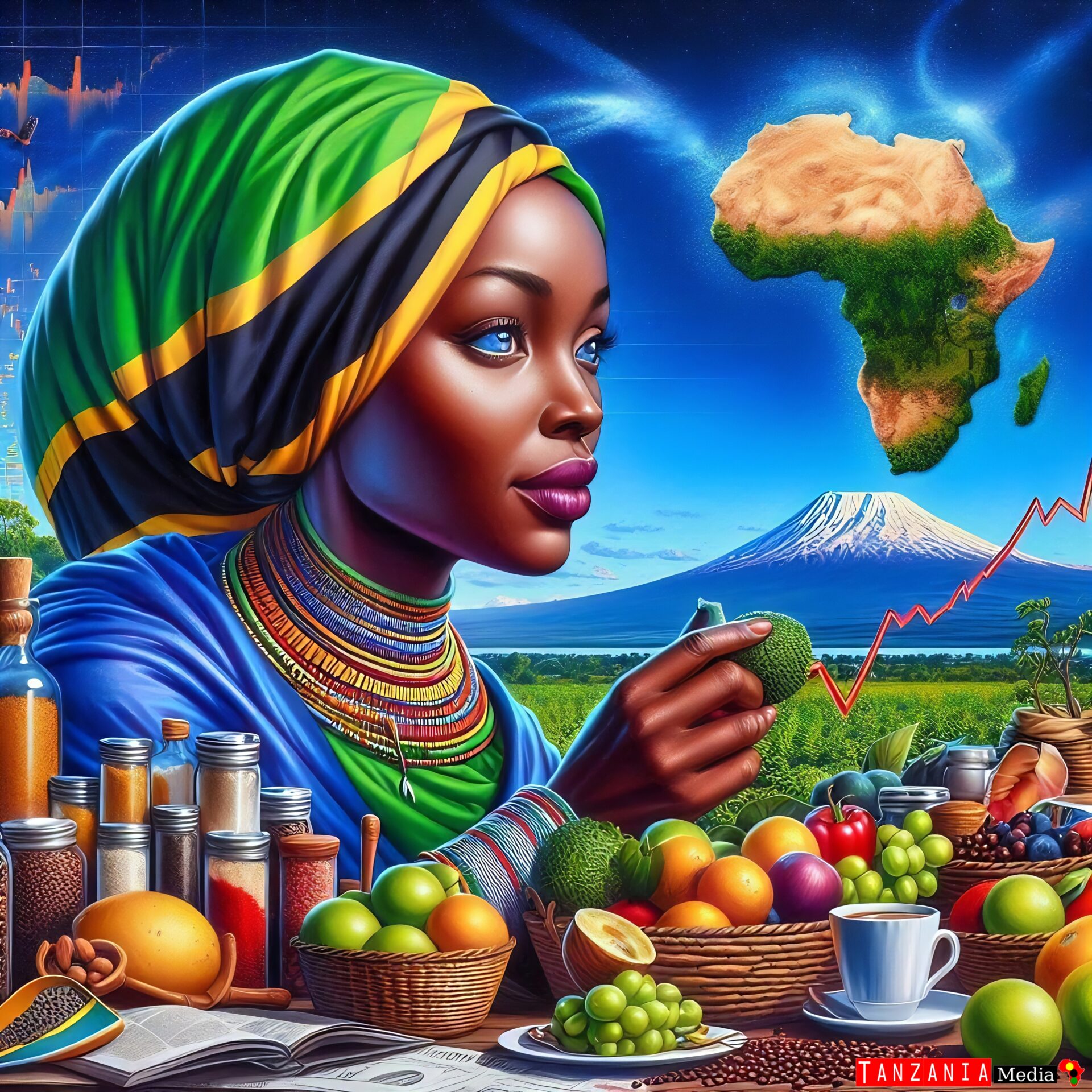
Case Study: Transformative Impact of Strategic Policies
To illustrate the impact of these recommendations, consider the following scenarios:
- Fatima’s Coffee Business : Fatima, a small-scale coffee farmer in Mbeya, benefits from streamlined customs procedures and improved rail connectivity. Her processed coffee reaches European markets faster and at lower costs, fetching premium prices and doubling her income.
- Hamisi’s Logistics Venture : Hamisi, an entrepreneur in Dar es Salaam, establishes a logistics company after receiving mentorship and funding through a government-backed accelerator program. His firm leverages upgraded port facilities and SGR connections to serve regional clients, creating dozens of jobs.
- Amina’s E-Commerce Store : Amina, a young fashion designer in Arusha, uses an e-commerce platform to sell her handmade jewellery globally. Affordable internet access and fintech solutions enable her to process payments securely and scale her business.
These examples demonstrate how forward-thinking policies can transform lives, businesses, and communities.
Conclusion: A Blueprint for Progress
Tanzania’s path to sustainable growth lies in adopting forward-thinking policies that address systemic challenges while harnessing emerging opportunities. Streamlining customs procedures, upgrading ports and railways, promoting entrepreneurship, and fostering digital innovation are not isolated measures—they are interconnected strategies that reinforce one another, amplifying their impact.
As Tanzania charts its course toward prosperity, these recommendations offer a blueprint for action. In the words of Julius Nyerere, “We must run together, not because we are strong, but because we want to share what we have.” True progress lies not in accumulating wealth but in ensuring that prosperity reaches every corner of society. By implementing these policies thoughtfully and inclusively, Tanzania can continue to shine brightly on the global stage—a testament to its determination to build a brighter, more equitable future for all.
The Human Dimension: Livelihoods Behind the Numbers
Behind every tonne of exported gold, every sack of coffee, and every shipment of cloves lies a human story—a narrative woven with hopes, struggles, and aspirations. These stories remind us that economic statistics are not abstract figures; they represent real people whose lives are deeply intertwined with Tanzania’s ability to succeed in global markets. Consider Fatuma, a spice farmer in Pemba, or Juma, a miner in Shinyanga. Their livelihoods depend on the nation’s capacity to navigate challenges, seize opportunities, and ensure that the benefits of economic growth are shared equitably. For policymakers, prioritising these human dimensions is not just a moral imperative—it is essential for fostering sustainable development and social cohesion.
Fatuma’s Story: The Spice Farmer of Pemba
Fatuma rises before dawn to tend her clove plantation in Pemba, an island renowned for its aromatic spices. Her day begins with harvesting cloves, carefully drying them under the sun, and preparing them for sale. For Fatuma, cloves are more than just a crop—they are her lifeline, funding her children’s education, healthcare, and daily needs. Yet, her journey is fraught with challenges:
- Market Access : Fatuma often sells her cloves to middlemen who offer meagre prices, leaving little room for profit. Without direct access to international buyers, she struggles to negotiate fair compensation for her hard work.
- Climate Vulnerability : Erratic rainfall patterns and rising temperatures threaten her yields, forcing her to adapt traditional farming practices to increasingly unpredictable conditions.
- Infrastructure Gaps : Poor roads and limited storage facilities mean her produce risks spoilage before reaching market, further reducing her earnings.
Fatuma’s story highlights the resilience of smallholder farmers, who form the backbone of Tanzania’s agricultural sector. However, it also underscores the urgent need for policies that empower producers like her—through better infrastructure, market linkages, and climate-resilient practices—to ensure they can thrive in a competitive global economy.
Juma’s Story: The Miner of Shinyanga
Juma spends his days deep underground in Shinyanga, one of Tanzania’s largest gold-producing regions. Armed with rudimentary tools and unwavering determination, he sifts through soil and rock in search of ore. For Juma, mining is not just a job—it is survival, providing for his family and supporting his community. Yet, his work comes with significant risks:
- Safety Hazards : Operating without proper equipment or training, Juma faces daily dangers such as cave-ins, toxic fumes, and injuries. Many artisanal miners operate informally, lacking protective gear or medical support.
- Exploitation : Middlemen often exploit miners like Juma, paying them low sums for their finds while reaping substantial profits themselves. Smuggling and illegal trading further erode earnings, depriving the government of much-needed revenues.
- Environmental Impact : Artisanal mining frequently leads to deforestation, soil erosion, and water pollution, harming both ecosystems and nearby communities.
Juma’s experience reflects the plight of thousands of artisanal miners across Tanzania. Formalising the sector, ensuring fair wages, and promoting sustainable practices would not only protect workers but also enhance the industry’s contribution to the economy.
Beyond Individuals: Communities at Stake
The human dimension extends beyond individual livelihoods to encompass entire communities. In regions like Mbeya, where coffee farming dominates, or Geita, where gold mining thrives, the local economy revolves around these activities. When farmers or miners struggle, the ripple effects are felt by everyone—from shopkeepers to teachers to healthcare providers.
For example:
- Economic Multipliers : A successful harvest or profitable mining operation boosts demand for goods and services, creating jobs and stimulating growth within the community.
- Social Services : Revenue generated from exports funds schools, clinics, and clean water projects, improving quality of life and fostering social cohesion.
- Cultural Heritage : Industries like spice farming in Zanzibar or gemstone mining in Merelani are deeply tied to cultural identity, preserving traditions passed down through generations.
Conversely, when these sectors falter, communities suffer. Ensuring equitable benefits from economic gains is therefore crucial for maintaining stability and prosperity.
Equitable Benefits: A Priority for Policymakers
To truly transform Tanzania’s economy, policymakers must place the human dimension at the forefront of decision-making. This requires addressing systemic inequalities and ensuring that all stakeholders—particularly marginalised groups—benefit from economic growth:
- Fair Compensation : Implementing transparent pricing mechanisms and eliminating exploitative intermediaries would ensure that producers receive fair compensation for their labour.
- Access to Resources : Providing affordable credit, modern tools, and technical assistance would empower small-scale farmers and miners to improve productivity and profitability.
- Education and Skills Development : Expanding access to vocational training and entrepreneurship programs would equip individuals with the skills needed to thrive in evolving industries.
- Community Engagement : Involving local populations in decision-making processes ensures that policies reflect their realities and priorities. Collaborating with grassroots organisations and cooperatives amplifies impact and builds trust.
By prioritising these measures, Tanzania can create an inclusive economy that leaves no one behind—a vision aligned with the principles of Ujamaa (familyhood) championed by Julius Nyerere.
Case Study: Transformative Policies in Action
To illustrate the transformative potential of equitable policies, consider the following examples:
- Fatuma’s Cooperative : After joining a government-supported cooperative, Fatuma gains access to cold storage units, certified organic labels, and direct export channels. Her cloves now fetch premium prices in European markets, doubling her income and benefiting her entire village.
- Juma’s Formalised Mining Operation : Through a program aimed at formalising artisanal mining, Juma receives safety training, affordable tools, and fair contracts. His earnings increase significantly, enabling him to send his children to school and invest in his community.
- Local Infrastructure Projects : Revenue from gold exports funds road construction in Shinyanga, connecting remote villages to urban centres and opening new markets for local businesses.
These stories demonstrate how targeted interventions can transform lives, strengthen communities, and drive sustainable growth.
Conclusion: Prosperity for All
Tanzania’s economic progress cannot be measured solely by export volumes or GDP growth—it must be evaluated by the tangible improvements it brings to people’s lives. Behind every statistic lies a human story, reminding us that true development is about more than numbers; it is about dignity, opportunity, and shared prosperity.
As Tanzania charts its course toward a brighter future, ensuring equitable benefits from economic gains should remain a top priority. By empowering individuals like Fatuma and Juma, investing in their communities, and fostering inclusive growth, Tanzania can build an economy that works for everyone. In the words of Julius Nyerere, “We must run together, not because we are strong, but because we want to share what we have.” By embracing this spirit of unity and equity, Tanzania can continue to shine brightly on the global stage—a beacon of hope, resilience, and shared success.
Conclusion: Looking Ahead – Tanzania’s Path to Sustainable Development
As we reflect on Tanzania’s exchange rates, exports, and reserves, one undeniable truth emerges: this nation stands at a pivotal crossroads. On one hand, its rich natural resources—gold mines shimmering in Geita, cloves fragrant in Zanzibar, and tanzanite glowing in Merelani—offer immense potential for prosperity. These treasures have long been the bedrock of Tanzania’s economy, fueling growth and supporting millions of livelihoods. On the other hand, structural vulnerabilities—ranging from overreliance on raw material exports to logistical inefficiencies and climate change impacts—demand urgent attention. The choices Tanzania makes today will determine whether it fulfils its vast potential or remains constrained by systemic challenges.

Balancing Tradition with Innovation
At the heart of Tanzania’s journey lies the delicate balance between tradition and innovation. The nation’s cultural heritage and time-tested practices are assets that must be preserved and celebrated. For instance:
- Small-Scale Farmers : Generations of knowledge about sustainable farming techniques, passed down through families, remain invaluable in addressing modern challenges like climate change.
- Artisanal Miners : The ingenuity and perseverance of miners working with rudimentary tools exemplify the resilience embedded in Tanzanian society.
Yet, clinging solely to tradition risks stagnation. Embracing innovation—whether through advanced irrigation systems, blockchain-enabled supply chains, or digital platforms connecting producers to global markets—is essential for unlocking new opportunities. By blending the wisdom of the past with the tools of the future, Tanzania can create an economy that is both resilient and dynamic.

Steps Toward Sustainable Development
To chart a path toward sustainable development, Tanzania must adopt policies and initiatives that address immediate needs while laying the groundwork for long-term transformation:
- Diversification Beyond Commodities
Reducing reliance on raw material exports requires strategic investments in value addition and emerging sectors. Processing coffee locally, refining gold domestically, and establishing industrial zones for manufacturing would increase earnings, create jobs, and reduce vulnerability to global price fluctuations. - Climate-Resilient Practices
Climate change poses existential threats to agriculture, water supplies, and ecosystems. Promoting drought-resistant crops, renewable energy projects, and reforestation initiatives will ensure Tanzania’s natural wealth endures for generations to come. - Infrastructure Development
Upgrading roads, railways, ports, and energy systems is critical for enhancing connectivity, lowering costs, and attracting investment. Modernised infrastructure will not only facilitate trade but also integrate rural areas into the national economy, fostering inclusive growth. - Empowering Marginalised Groups
Women, youth, and rural communities often bear the brunt of economic challenges yet contribute significantly to the workforce. Providing them with access to education, affordable credit, and decision-making platforms will unlock untapped potential and drive equitable progress. - Embracing Technology
From fintech solutions revolutionising financial inclusion to agri-tech innovations improving farming productivity, technology holds the key to transformative change. Expanding internet access and promoting digital literacy will enable Tanzanians to participate fully in the Fourth Industrial Revolution.
A Legacy of Hope and Possibility
Tanzania’s success is not merely a national aspiration—it carries profound implications for the entire African continent. As one of East Africa’s largest economies, Tanzania has the opportunity to lead by example, demonstrating how resource-rich nations can harness their wealth responsibly and inclusively. Whether it’s nurturing small-scale farmers, safeguarding artisanal miners, or embracing cutting-edge technologies, the steps taken today will define the legacy left for tomorrow.
Consider the ripple effects:
- Regional Leadership : By strengthening ties within frameworks like the East African Community (EAC) and the African Continental Free Trade Area (AfCFTA), Tanzania can position itself as a hub for trade, logistics, and innovation.
- Global Influence : Success stories in sustainable mining, ethical sourcing, and eco-friendly agriculture could elevate Tanzania’s profile on the world stage, attracting partnerships and investments.
- Inspiration for Others : A thriving Tanzania serves as a beacon of hope, proving that even amidst challenges, nations can forge paths toward shared prosperity.
The Road Ahead: Challenges and Opportunities
The road ahead will undoubtedly be challenging. Addressing entrenched issues like corruption, bureaucratic inefficiencies, and infrastructural deficits requires political will, public participation, and international collaboration. Yet, these challenges are matched—and perhaps surpassed—by the opportunities before Tanzania:
- Youthful Demographics : With over 60% of its population under the age of 25, Tanzania boasts a vibrant, energetic workforce ready to innovate and build.
- Untapped Resources : Beyond gold and gemstones, Tanzania’s biodiversity, fertile soils, and untapped mineral deposits offer boundless possibilities.
- Global Partnerships : Strategic alliances with countries, multilateral organisations, and private sector players can mobilise resources, expertise, and markets needed for growth.
What steps will Tanzania take next? Will it prioritise short-term gains or invest in long-term sustainability? Will it focus narrowly on certain sectors or embrace diversification across industries? These questions linger, awaiting answers shaped by vision, courage, and collective action.
A Journey Worth Taking
Tanzania’s journey promises to be both challenging and inspiring—a testament to the resilience and determination of its people. As Julius Nyerere once said, “We must run together, not because we are strong, but because we want to share what we have.” True progress lies not in accumulating wealth but in ensuring that prosperity reaches every corner of society.
In doing so, Tanzania can continue to shine brightly on the global stage—a symbol of hope, possibility, and shared success. Its story is far from over; indeed, it is just beginning. The world watches with anticipation, confident that Tanzania’s choices today will illuminate a brighter future—for its citizens, its neighbours, and the generations yet to come.
Dr Joram
Tanzania Media Economist
- Kanyala Ferry Launch: TEMESA’s New Service for 15,000 Sengerema Residents (Mwanza) - 18 August 2025
- Russia-Tanzania Naval Cooperation: How the Smolny Training Ship Boosts Dar es Salaam’s Maritime Security - 18 August 2025
- Tanzania’s ICGLR Commitment: Stabilising the DRC & Great Lakes Region - 18 August 2025



